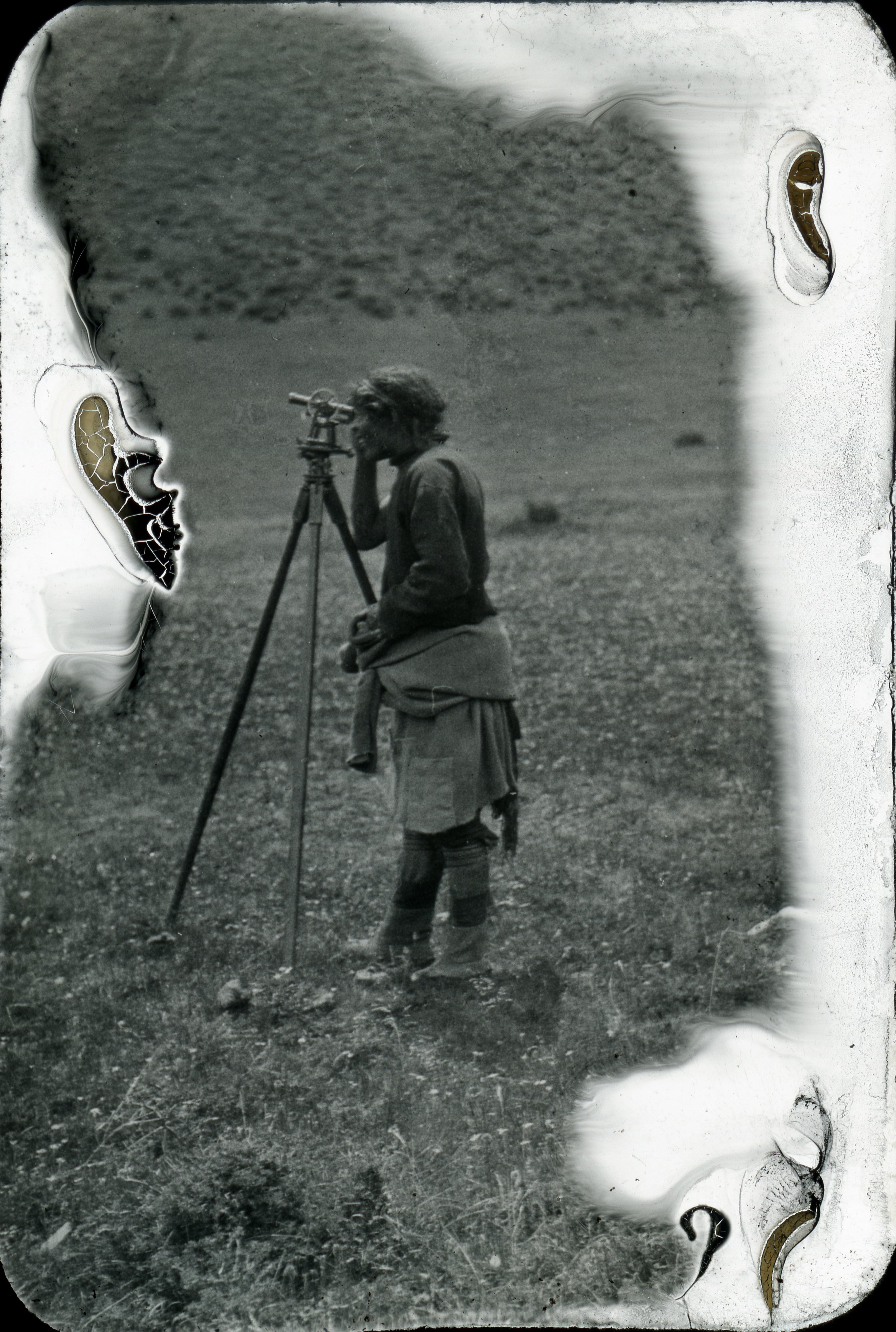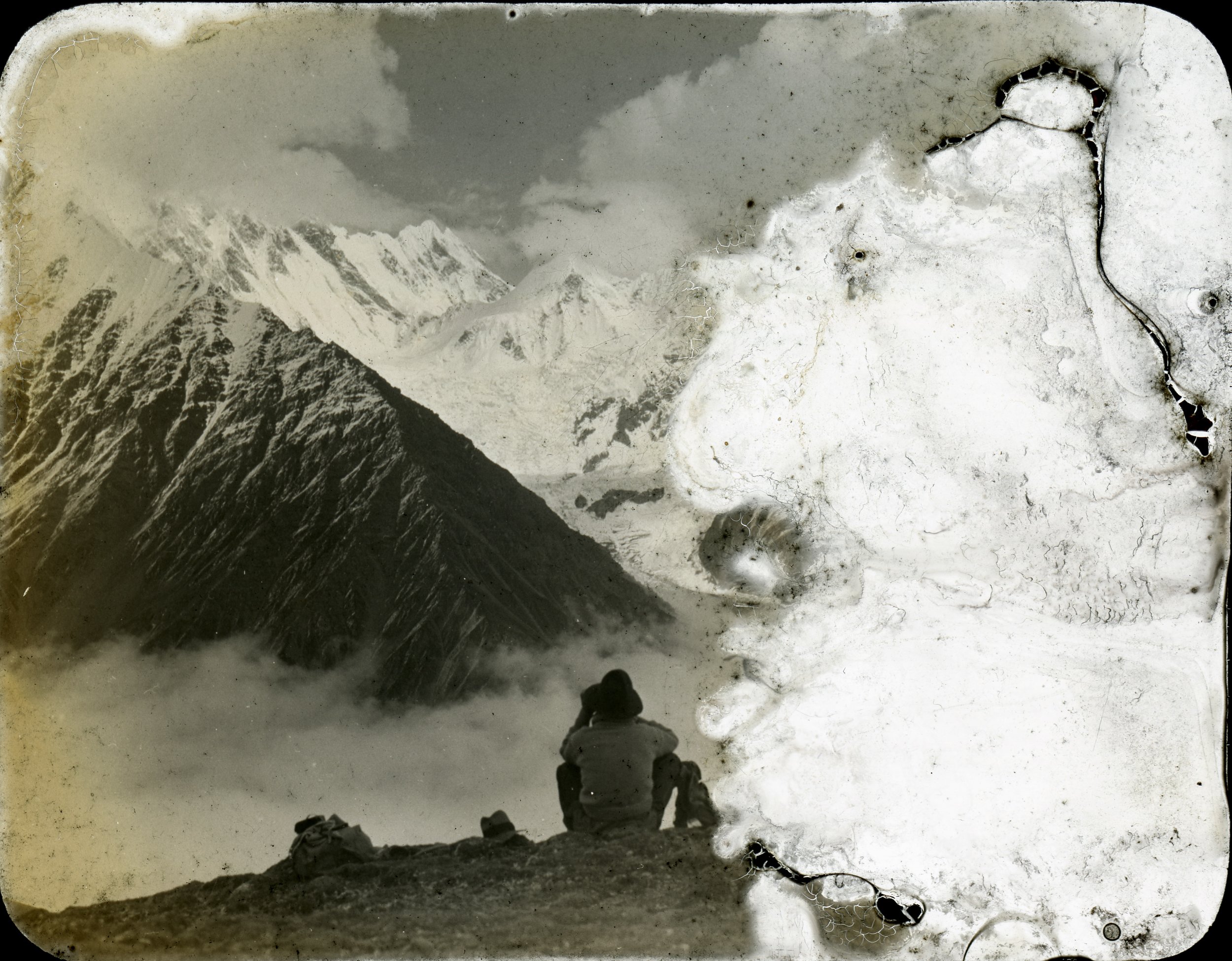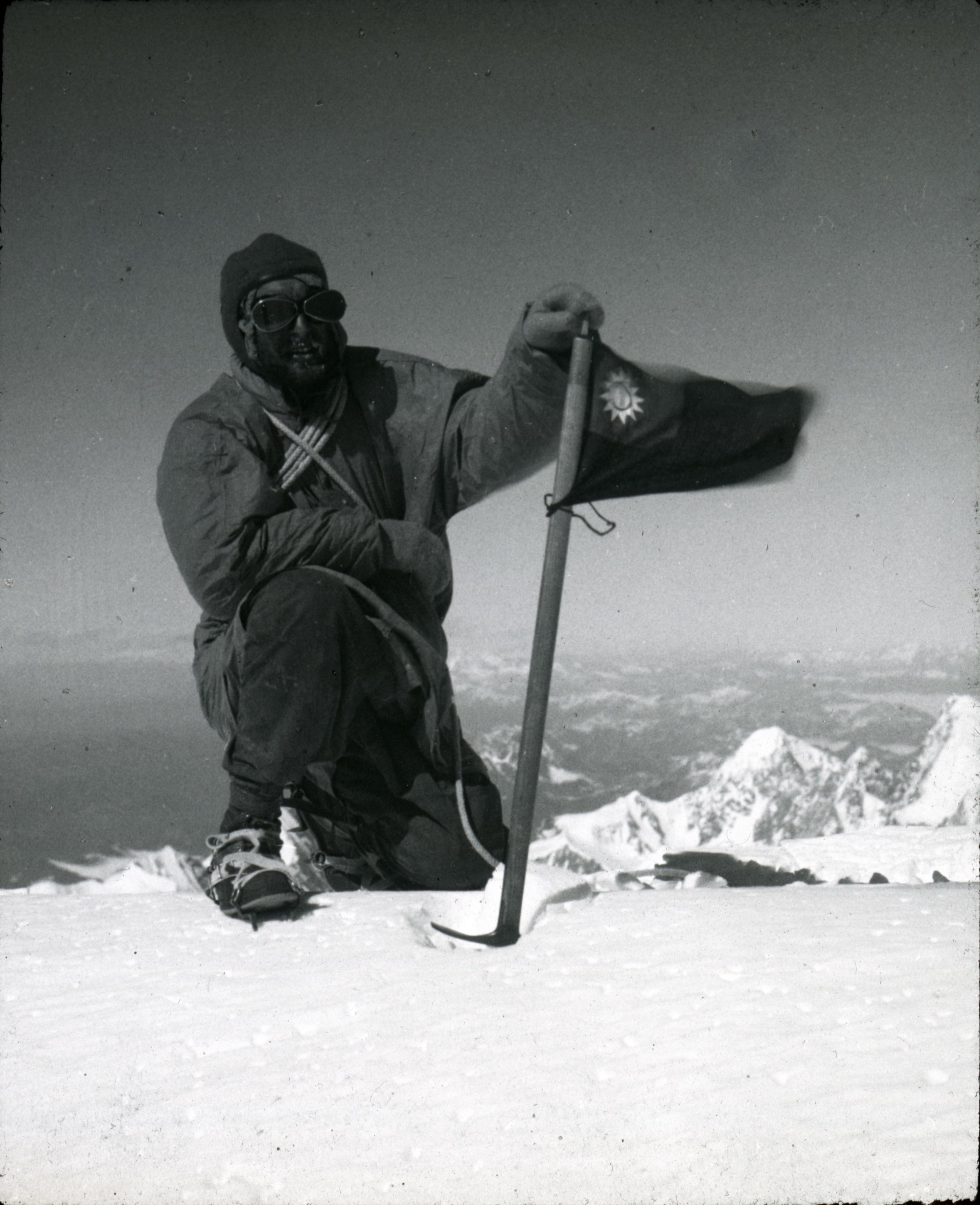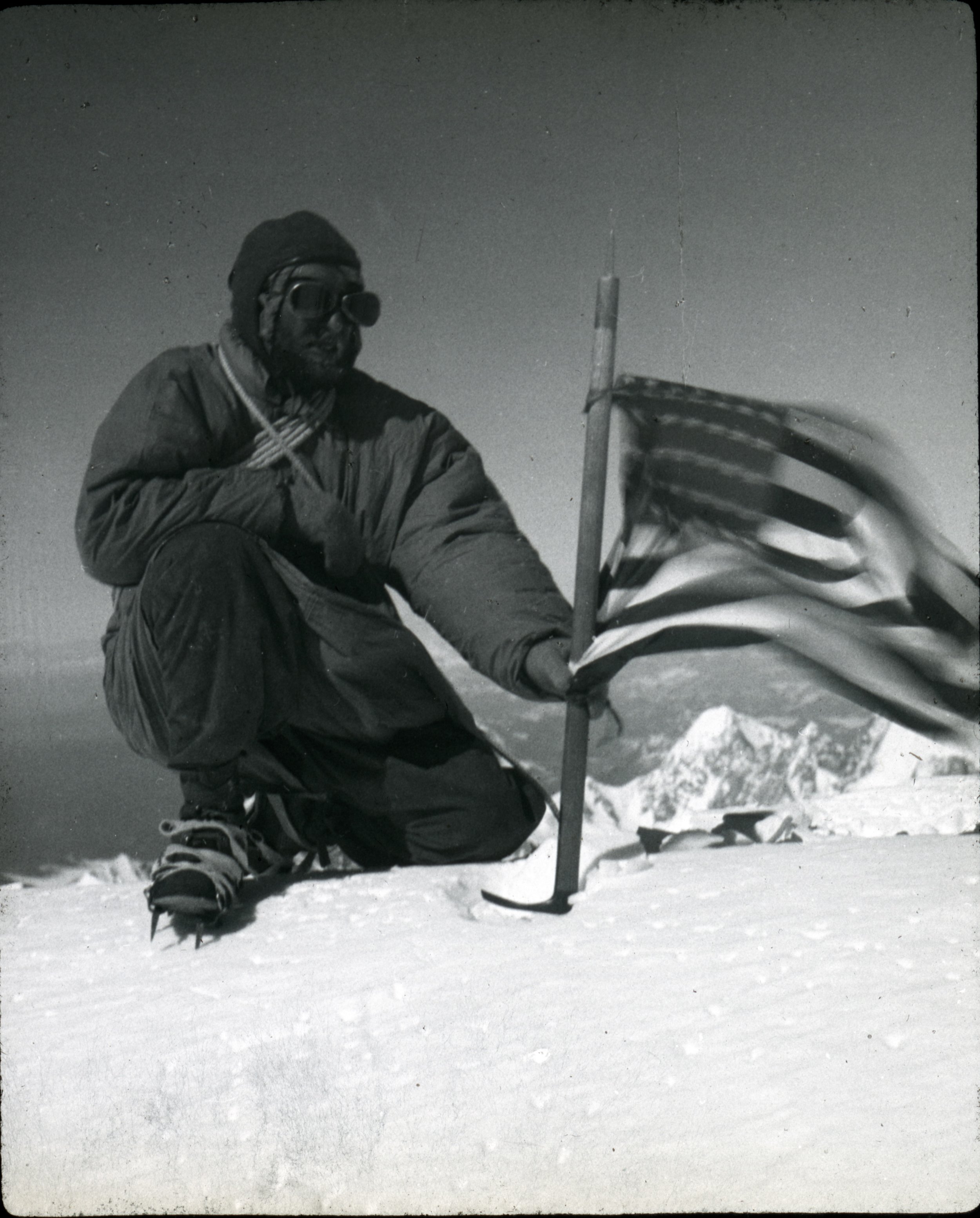It had all begun on an afternoon some nine months previous. Four of us were lying about relaxing after a particularly fine Teton climb when someone enthusiastically suggested, "Let’s climb the south face of McKinley next summer!” To attempt a new and difficult route on North America’s highest mountain seemed a most worthwhile enterprise; without further ado, we cemented the proposal with a great and ceremonious toast.
Gongga Shan (Minya Konka) 1932
by Eric Rueth
The Sikong Expedition in 1932 has to be one of the more unique mountaineering tales to have ever occurred. I and maybe others would argue that if there ever was a mountaineering expedition that should be turned into 1990’s style action-adventure movie starring Brendan Fraiser, this one would be it. There are too many interesting details to this expedition to fully capture in a blog post like this, so instead I’m going to give you a bare bones description and show you some of Terris Moore’s slides in an attempt to get you to read the American Alpine Club Journal articles about the expedition (linked below), and/or to read the entire book of the expedition (prologue through the epilogue), Men Against the Clouds. The pieces written by the expedition members themselves are really the only pieces of writing that do this expedition justice.
The Sikong Expedition consisted of four Americans, Jack Young, Terris Moore, Arthur Emmons, and Richard Burdsall. These were the four remaining members of a larger Explorers Club expedition that was meant to take place but dissolved due to various delays and complications created by global events. One of the global events was the Japanese invasion of Shanghai which led Young, Moore, Emmons, and Burdsall to briefly become a part of the American Company of the Shanghai Volunteer Corps.
After the dissolution Lamb Expedition to Northern Tibet, the first step of the newly formed Sikong Expedition was a twenty day journey up the Yangste River that featured rough waters, beautiful gorges and potential for pot shots from bandits on the river banks.
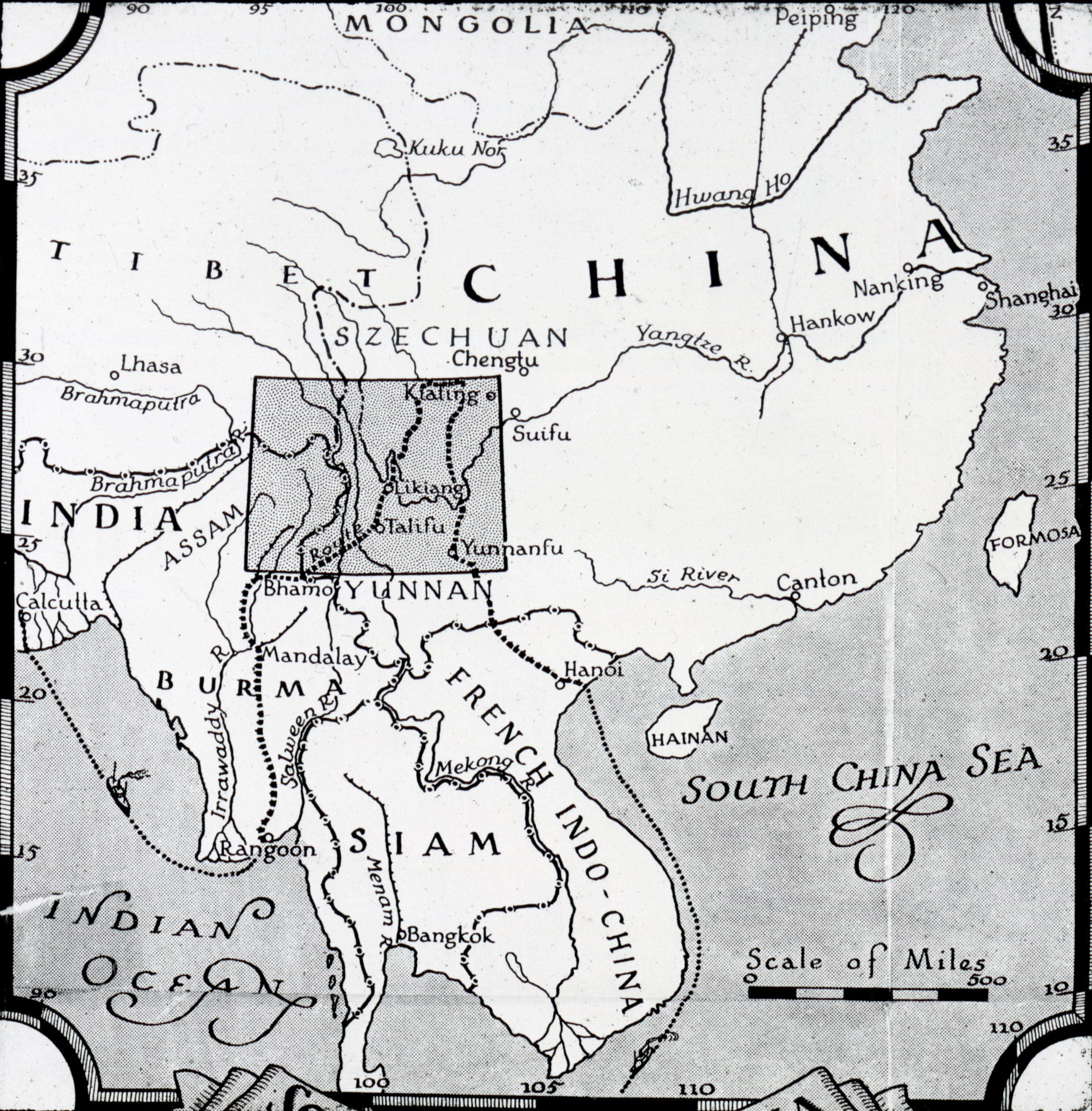
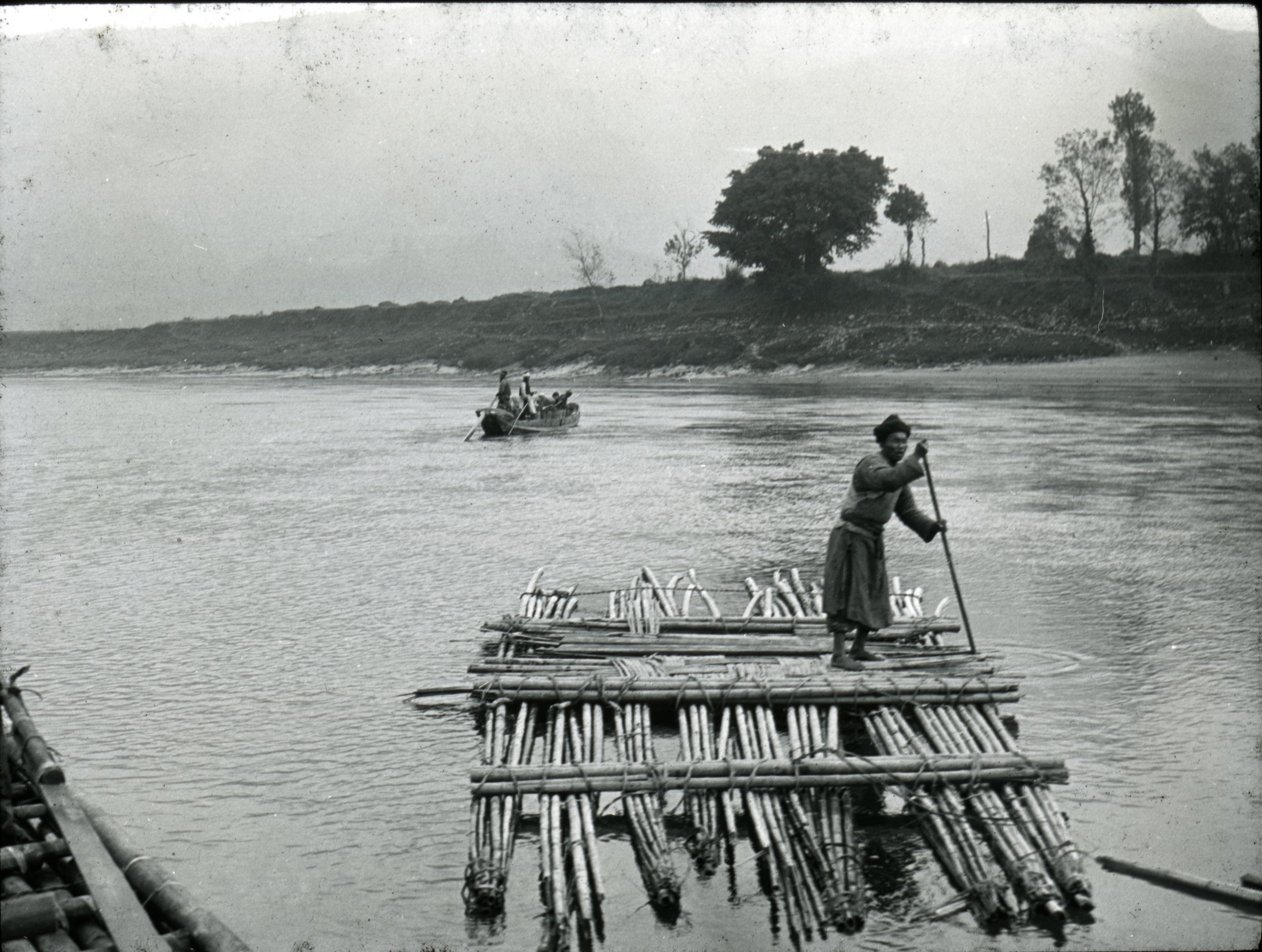
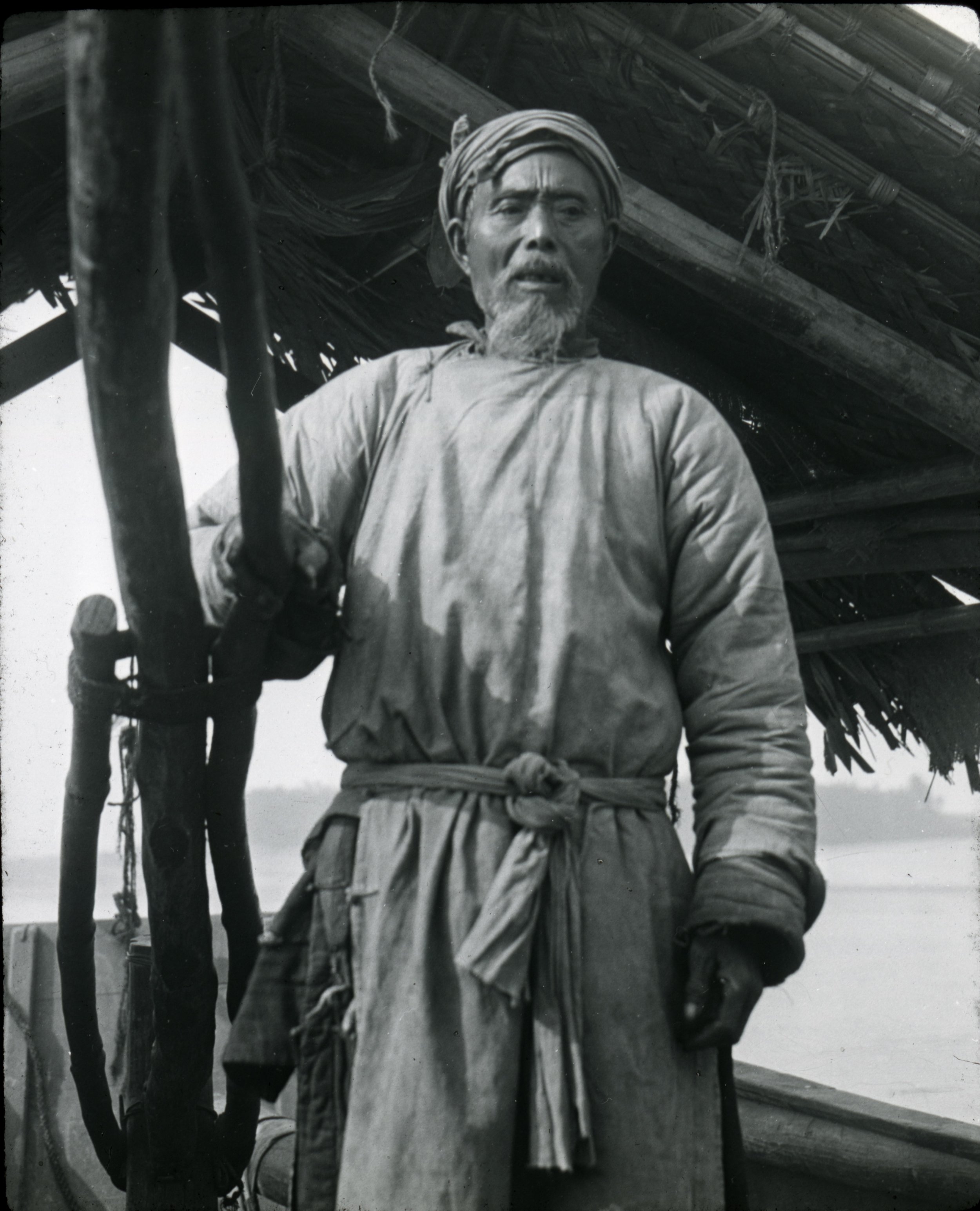
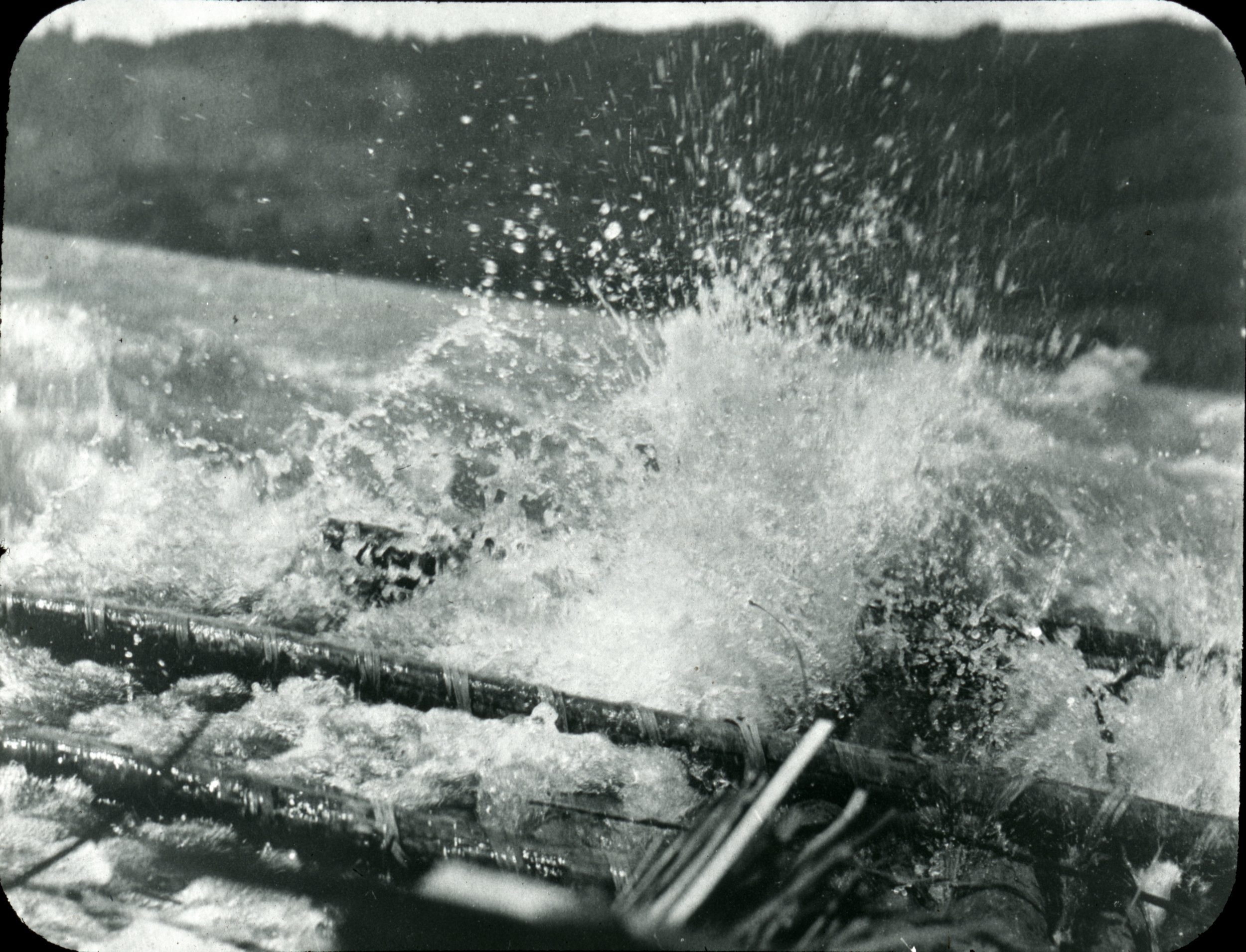
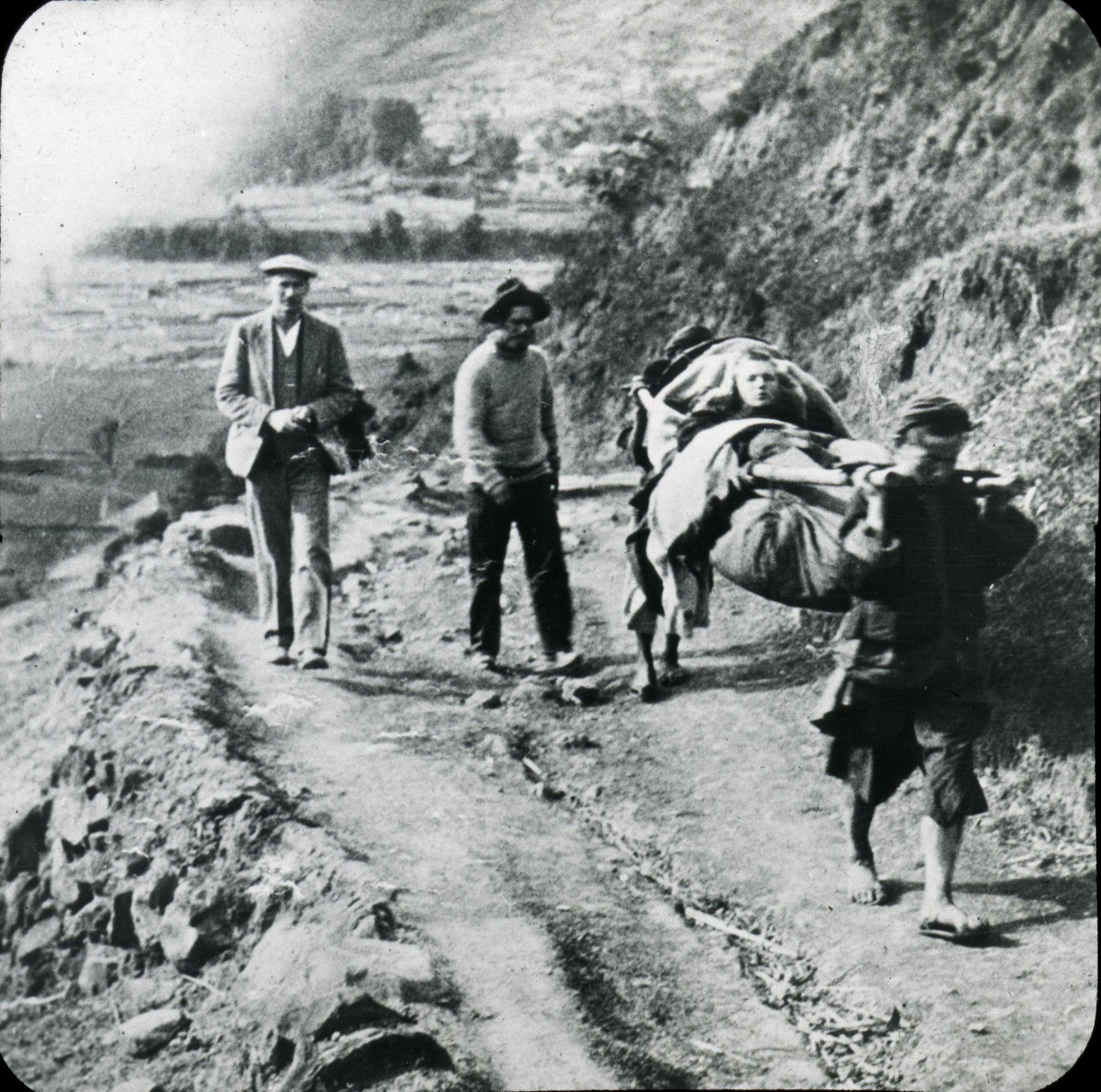
The Sikong-Szechuan region was still relatively unknown to the west and the purpose of the original expedition was to explore survey the region and gather samples of flora and fauna along with an attempt on Gongga Shan. The explorer’s spirit lived on in the Sikong Expedition. Thirty pages of appendices and one AAJ Article document their efforts. Below are two slides that not only shows the expedition doing some survey work but also shows how photographs and slides can degrade over time! If your interested in degrading photographs check out this previous library blog post.
Part of the reason for surveying the region and the mountain specifically was that at the time calculations of its height ranged anywhere from 16,500’ to 30,000’. The Sikong Expedition measured Gongga Shan’s height to be 24,891’ which is only 100’ off of the mountain’s current measured height of 24,790’.
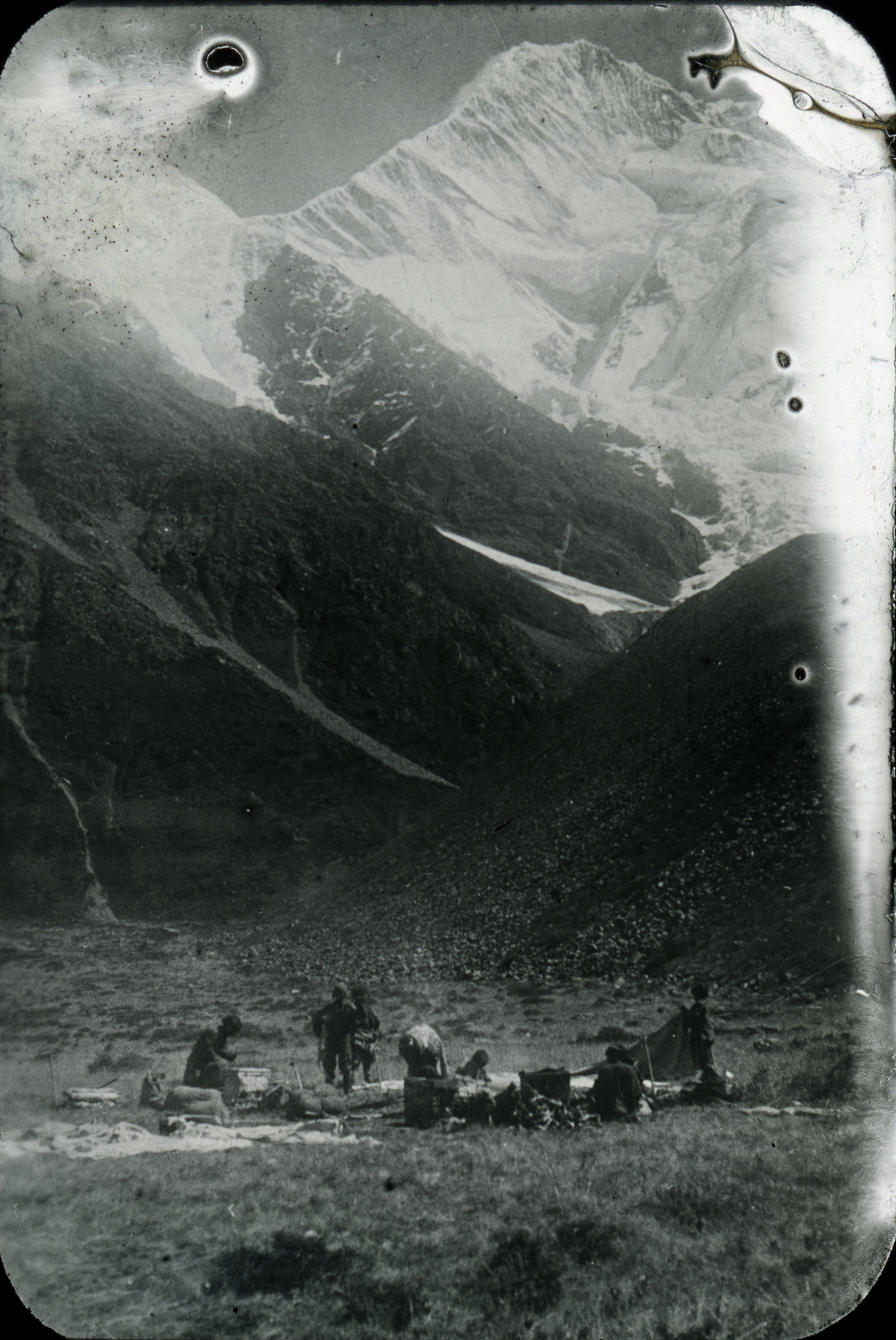
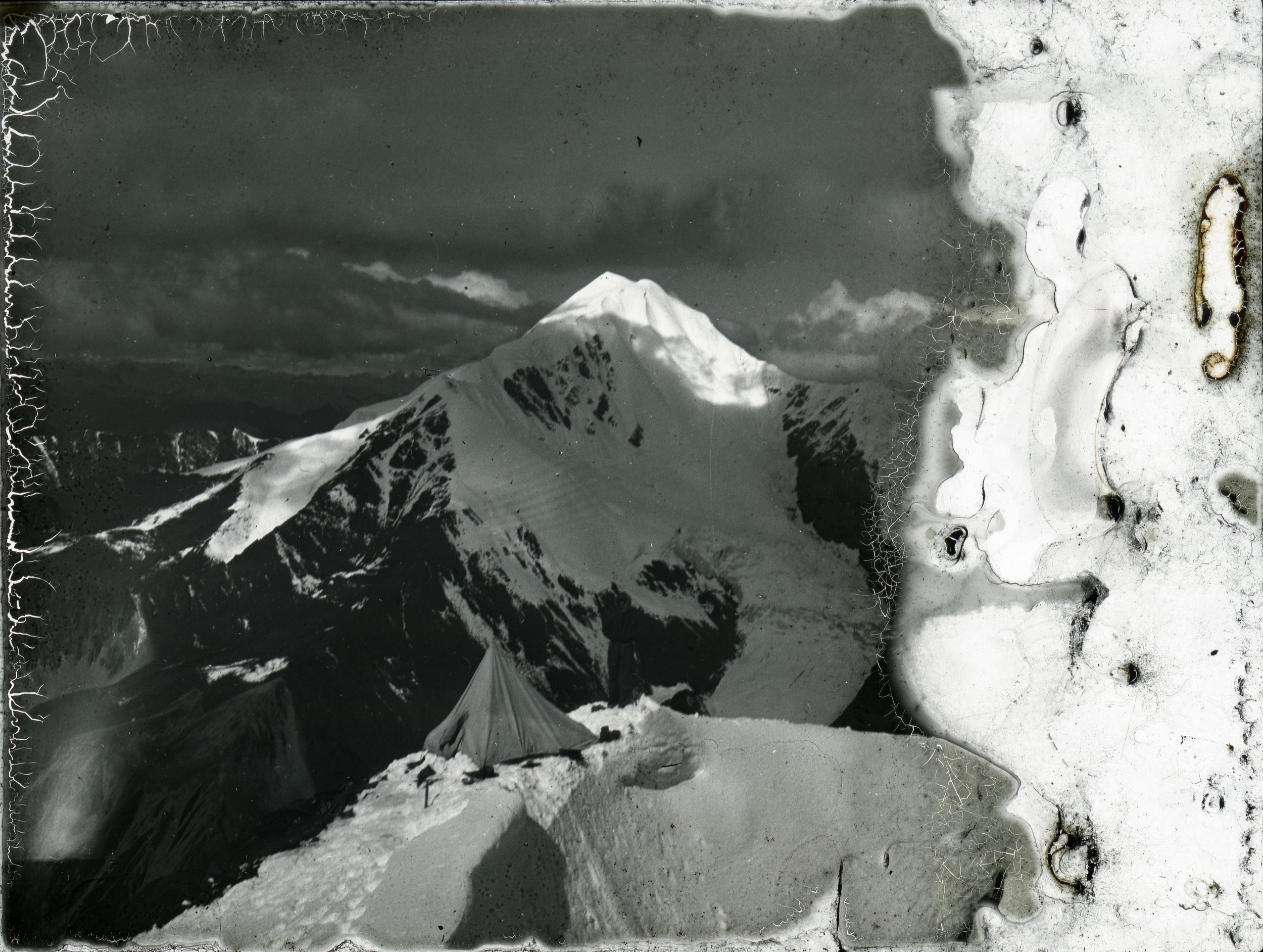
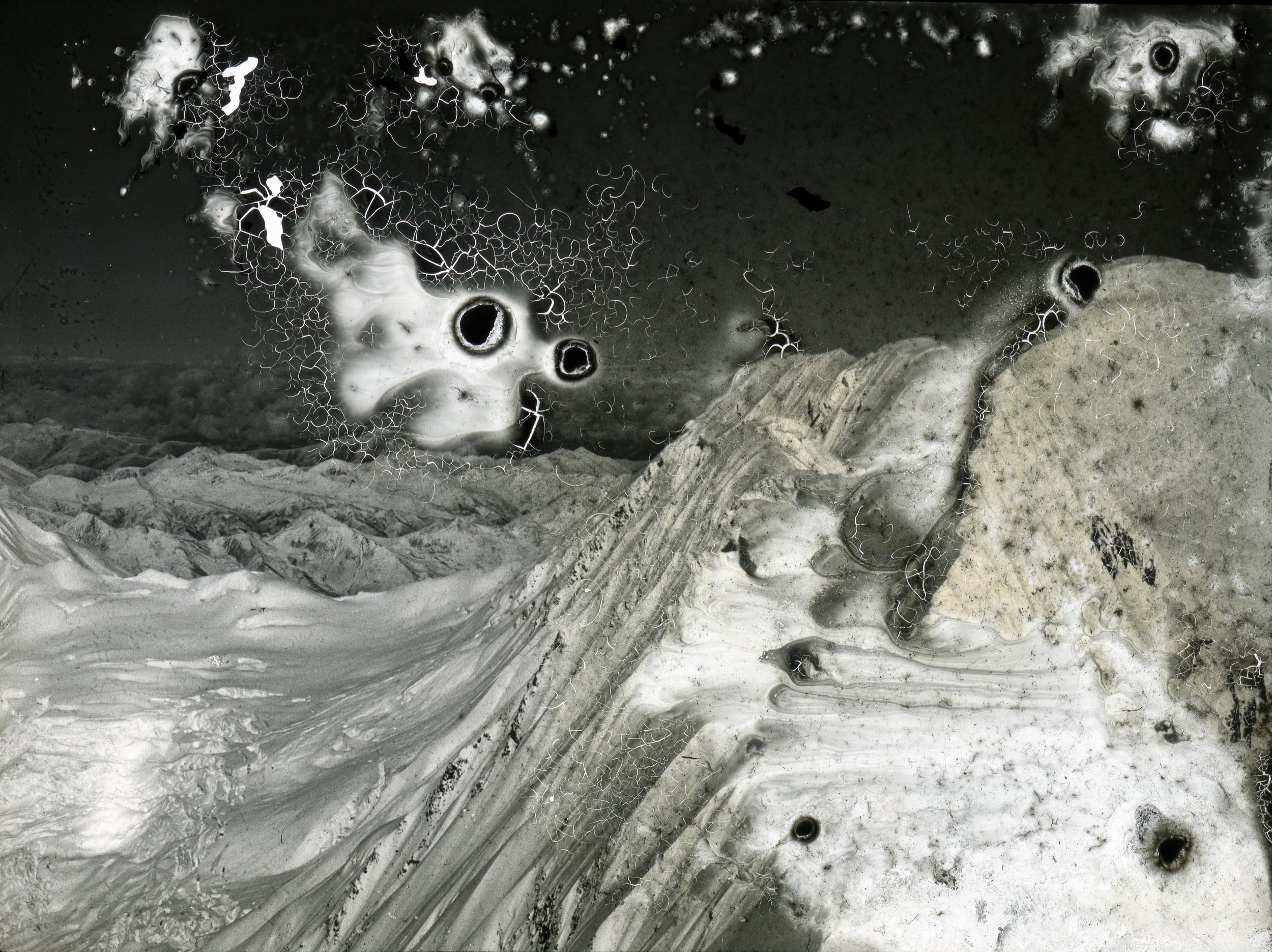
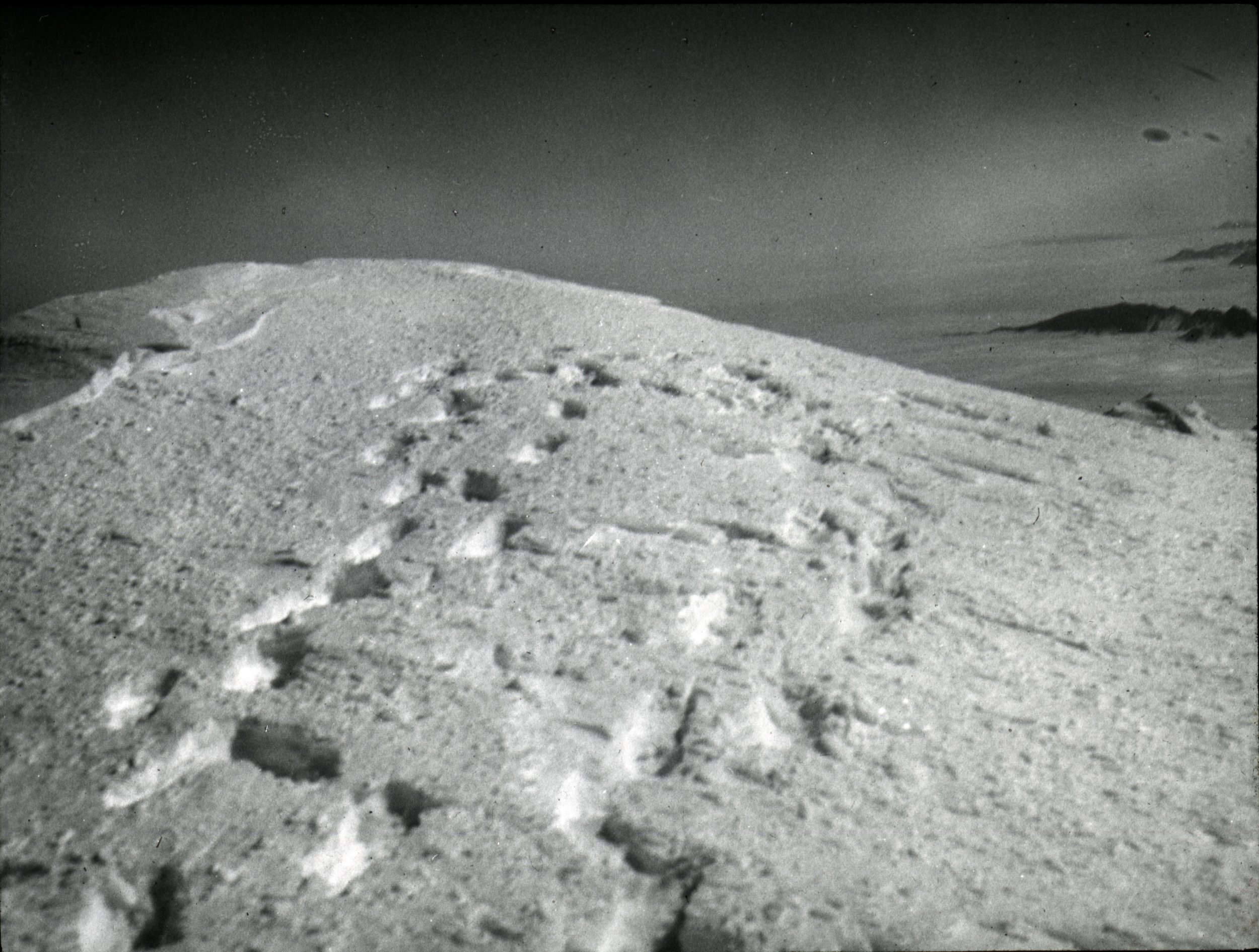
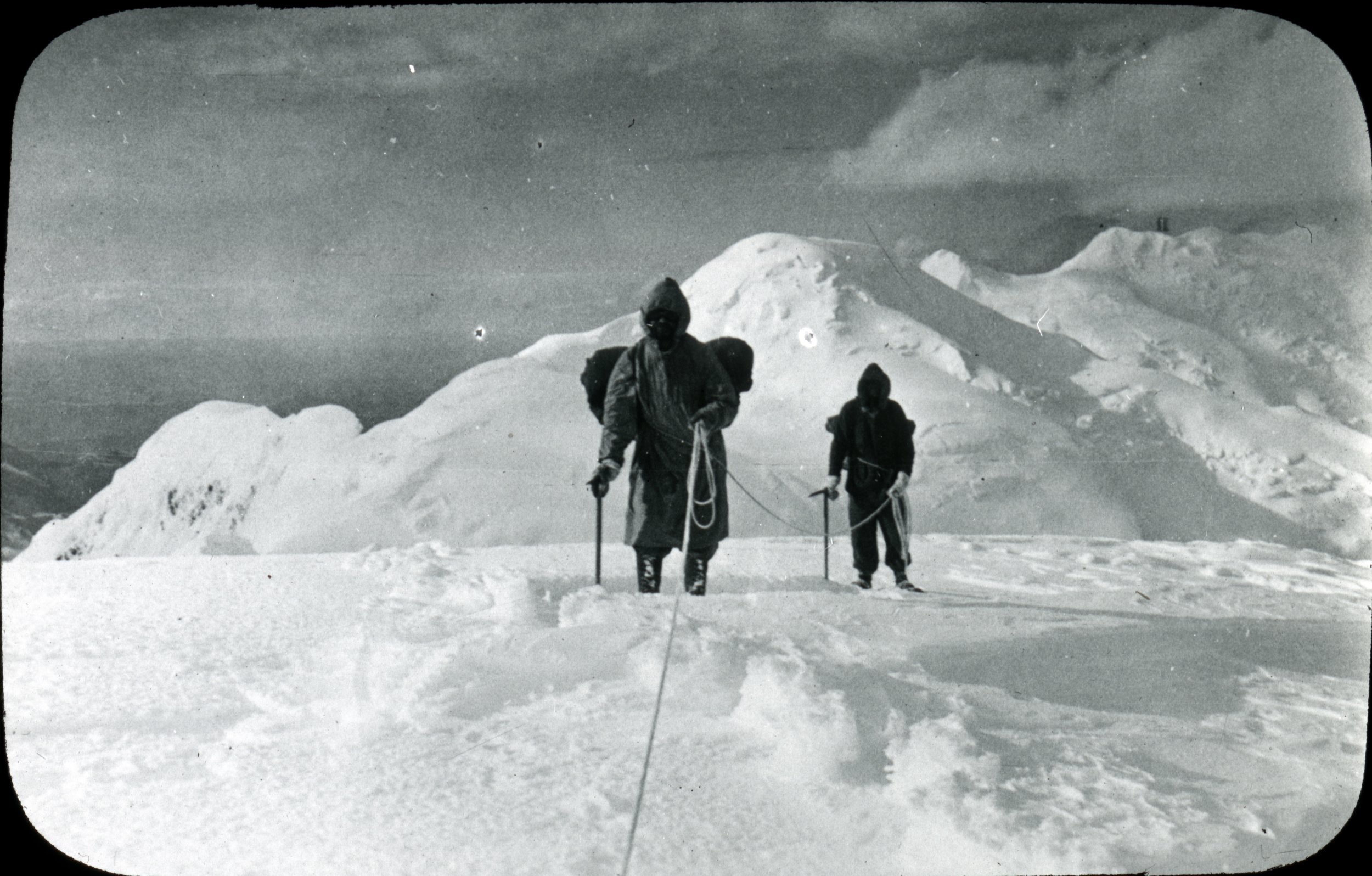
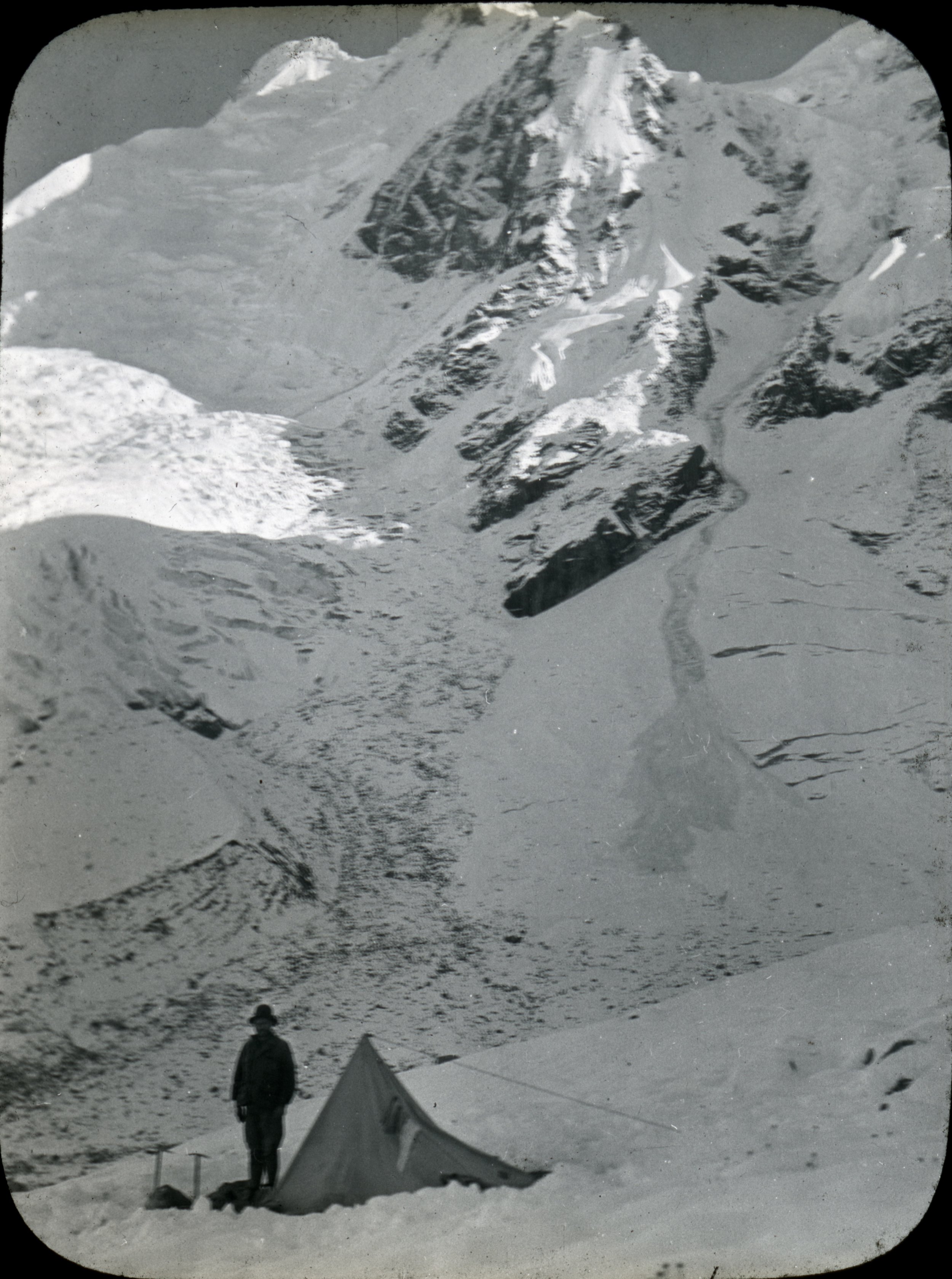
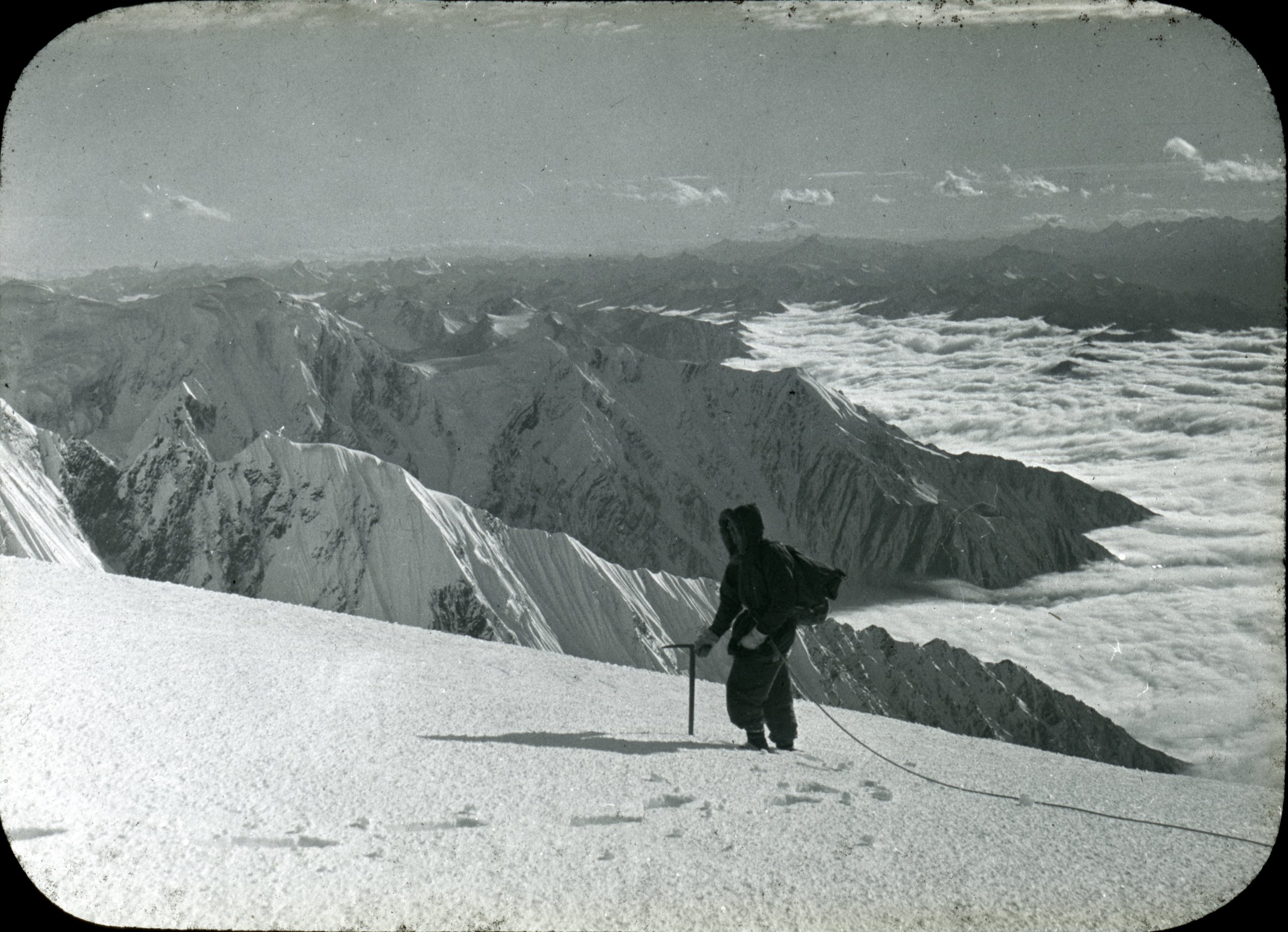
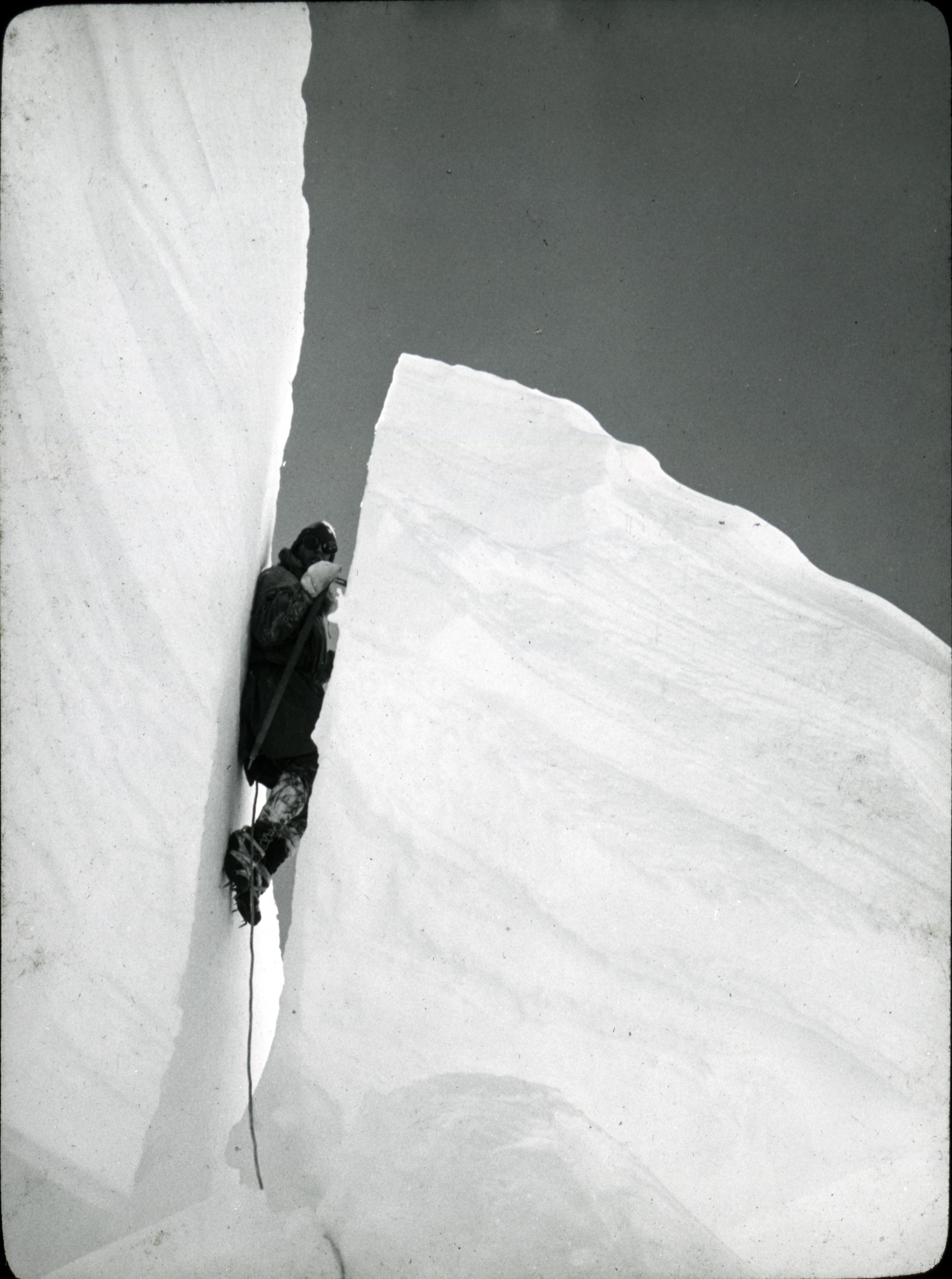
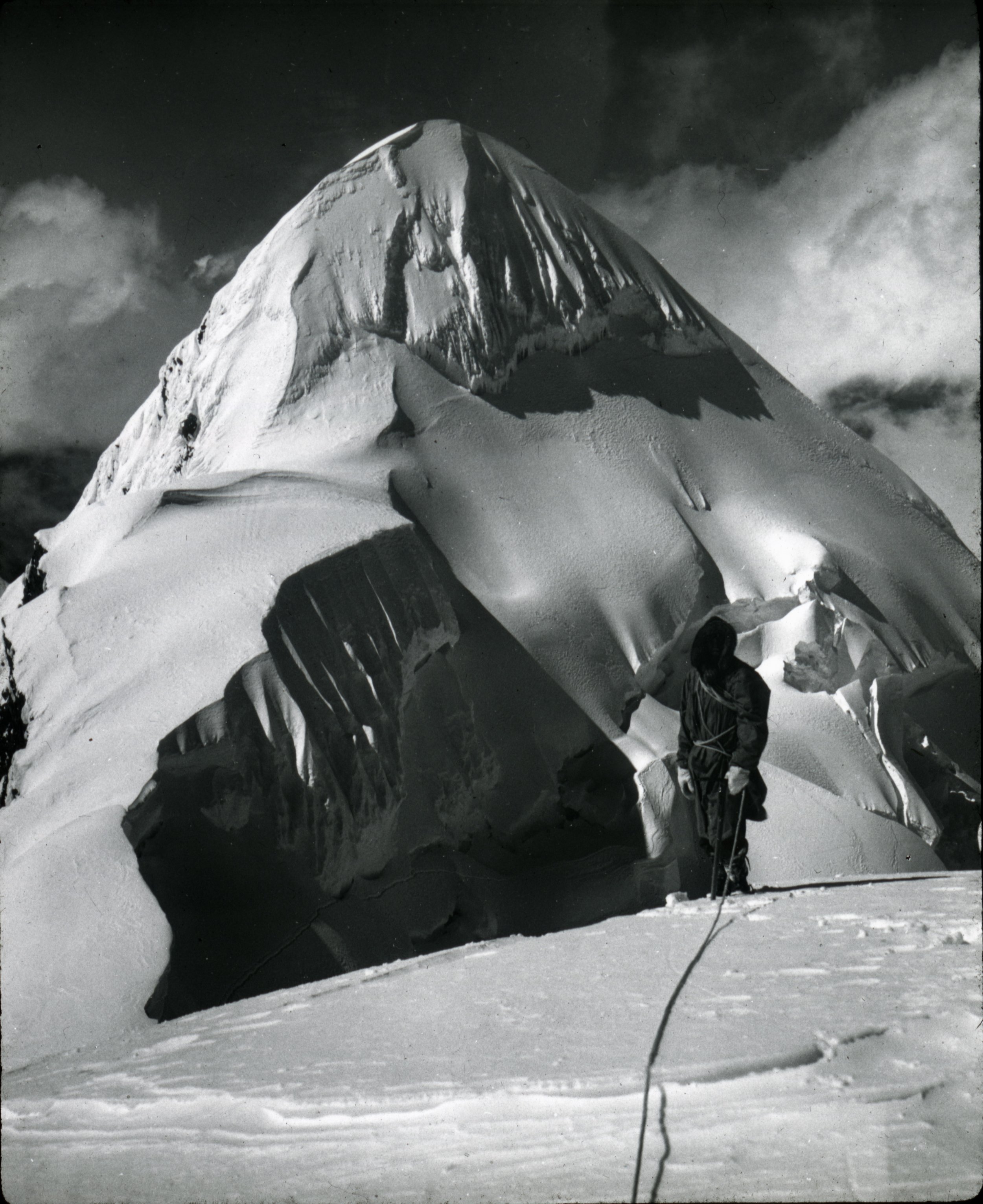
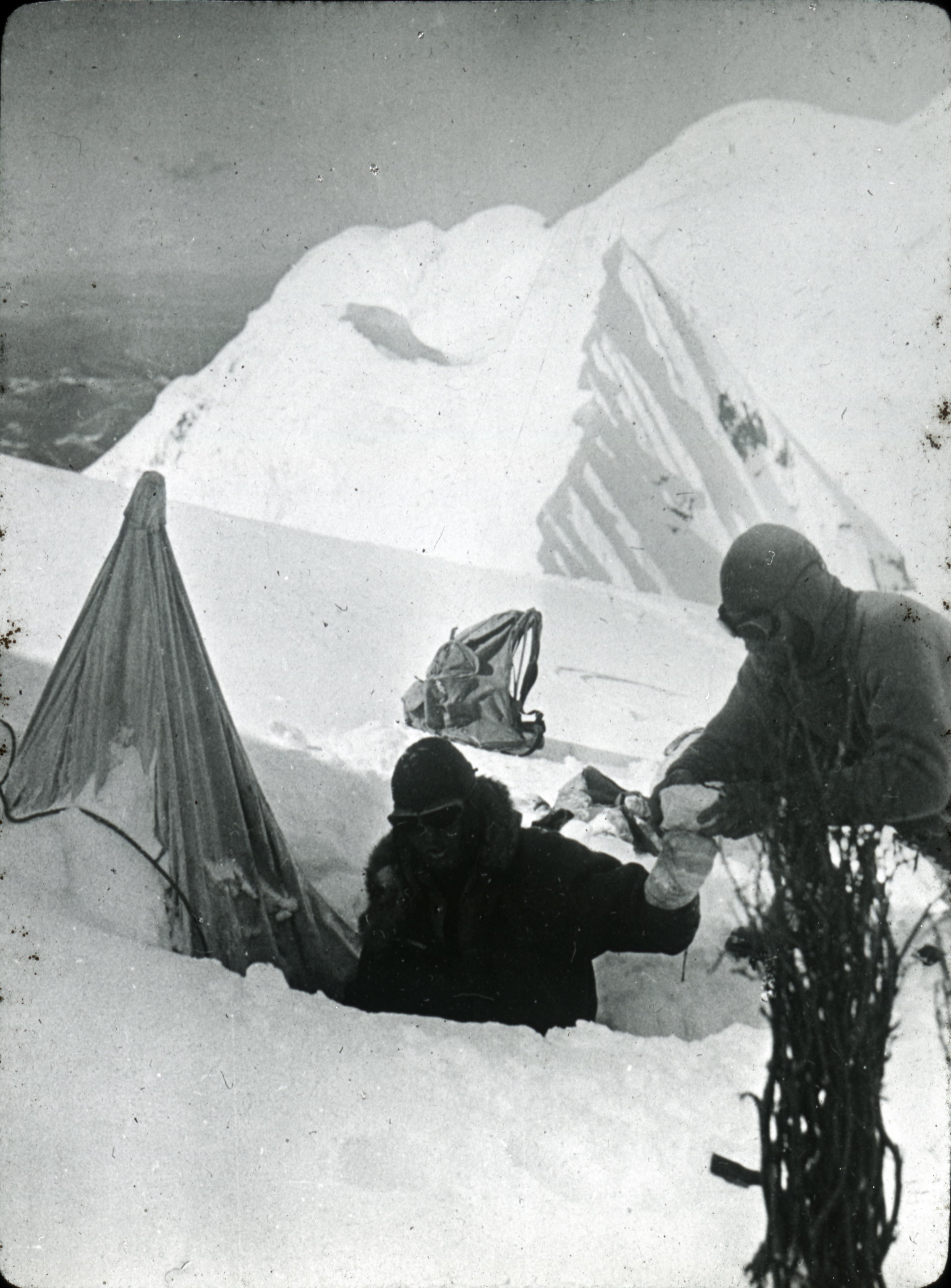
After weeks of acclimatization, moving supplies, and setting up camps, no high-altitude porters and with crevasse falls along the way; Moore and Burdsall attained the summit on October 28, 1932. Below are two of the dozens of photos taking while on the summit. Photographs were taken with the Chinese flag and the American flag. The American flag (48 stars) carried to the summit currently resides here at the American Alpine Club Library. Due to wind, an ice axe had to be pushed through the flags to keep them attached and flying for the summit photos.
What makes this expedition such an amazing feat is the twists and turns that take place in the story. The expedition in a sense never should have happened after the Lamb Expedition dissolved. Under normal circumstances it is likely that everyone would have headed home and planned to try again at a different time. Instead, four members remained in large part due to the Great Depression and being told that their money would fair them better in China and that there likely wouldn’t be work for them if they returned to the States. The style that the mountain was summited was more akin to modern expeditions than it was to the siege the mountain strategy that tended to be the norm for the day. Despite not receiving much plaudits at the time, Gongga Shan was the highest summit reached by Americans at the time but the expedition was able to help fill in one of the few remaining blanks on the map.
If you’re an American Alpine Club member you can checkout Men against the clouds by logging into the AAC Library Catalog.
And regardless of if you’re an AAC member, you can find AAJ articles written about the expedition by following the links below:
Terris Moore’s AAJ article about the climb
Arthur Emmon’s AAJ article about the survey work
A short article by Nick Clinch that concisely summarizes the expedition
Happy Anniversary, Gasherbrum I First Ascent!
by Eric Rueth
60 years ago today, Peter Schoening and Andy Kauffman topped a rounding ridge and had nowhere higher to go. After eight hours of climbing they found themselves on the summit of Gasherbrum I and became the only Americans to make a first ascent of an 8,000-meter peak.
"On July 4 all five os us started for Camp V which we hoped to establish at the 24,000-foot col between the south summit and the main peak" (Schoening, 1959).
To celebrate the ascent we're sharing some photo's from Andy Kauffman's collection.
To add some context here is the introduction to Pete Schoening's article from the 1959 American Alpine Club Journal and a link to the full article below.
"There is something exciting about expeditions. In part it must be the uncertainty of them. Perhaps this is adventure. But for Hidden Peak there was something even more. It could be the last chance for an American first ascent of an achttausender, and it seems extremely probable that first ascents of the fourteen achttausenders will become forever historically indicative of the mountaineering activity and ability of the various areas in the world.
Whether for adventure or history or whatever other reason, the ascent of Hidden Peak still required a party, permission and assistance from Pakistan, money, equipment, and an effort to carry out the attempt. Nick Clinch was the driving force behind the 1958 American Karakoram Expedition.* He was the "Director" and organizer.
Late in November 1957, Nick received Pakistani approval through the American Embassy in Karachi. From then on events began to occur at an increasing pace. Our freighter would leave New York by the end of March. In the middle of February as the party was being completed, I became a member. Besides Nick and myself, there were Andy Kauffman, Captain S. T. H. Risvi and Captain Mohd Akram of the Pakistan Army, Tom McCormack, Bob Swift, Dr. Tom Nevison, Gil Roberts, and Dick Irvin."
Click here to read the full "Ascent of Hidden Peak" article.
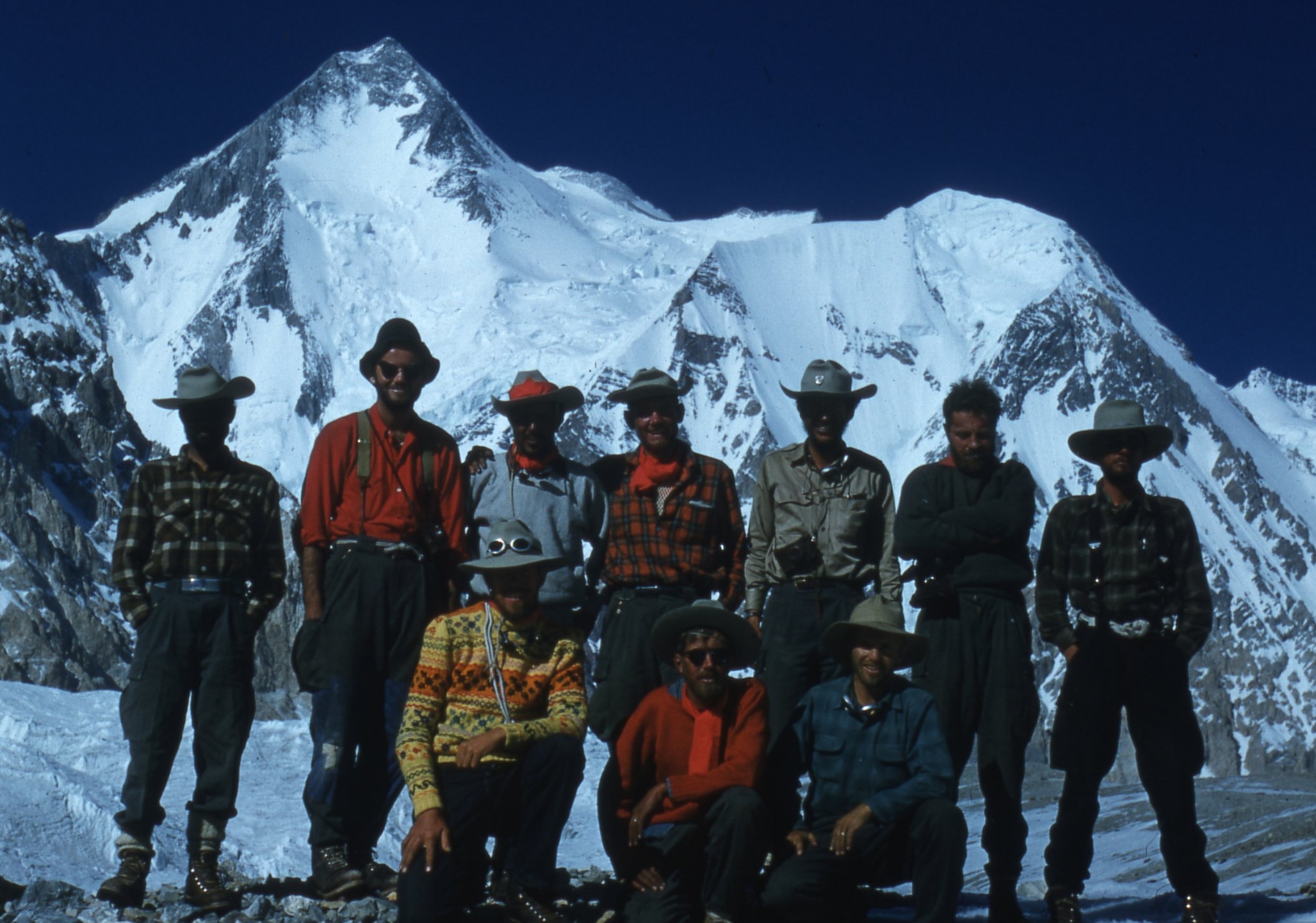
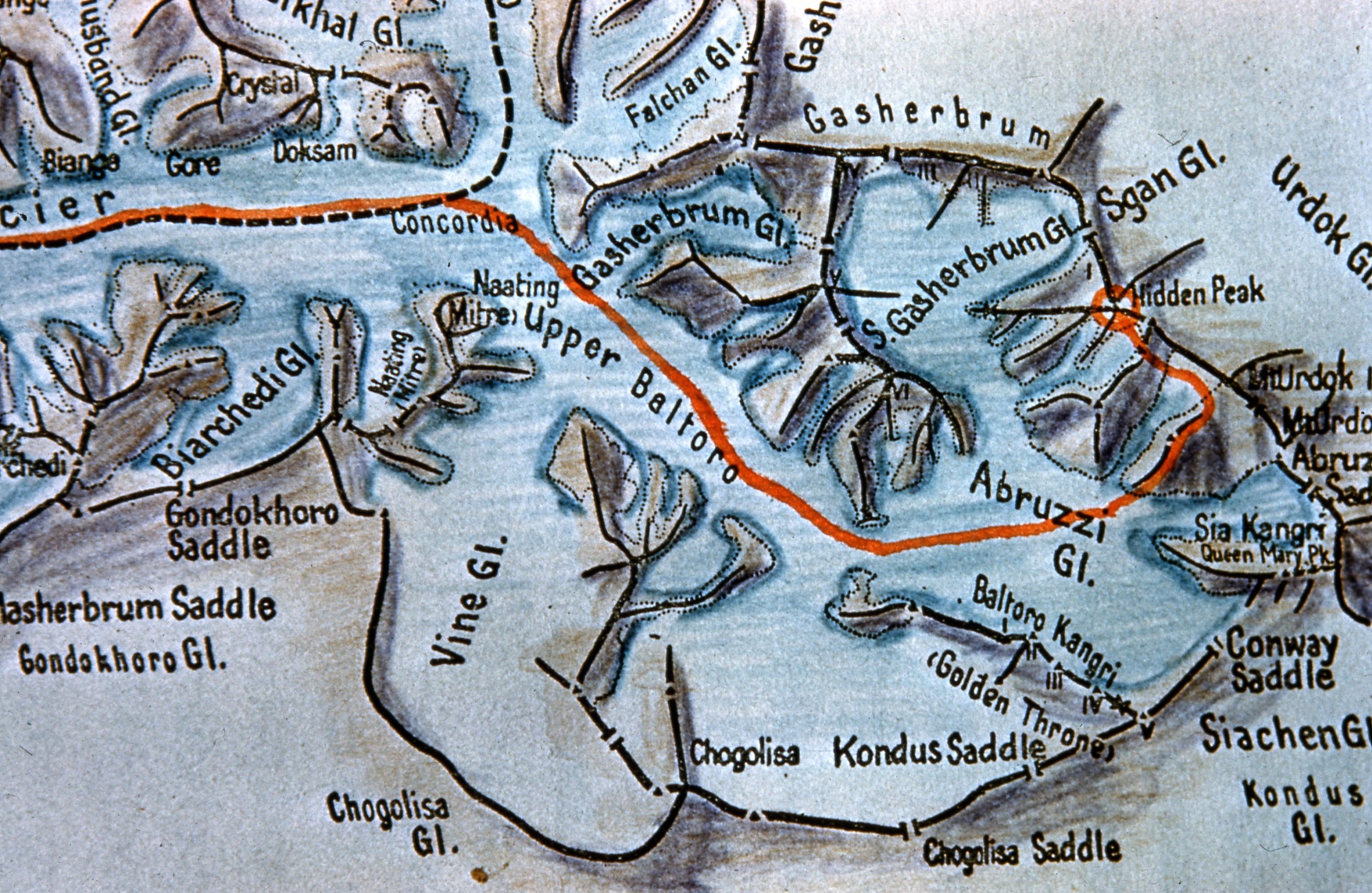
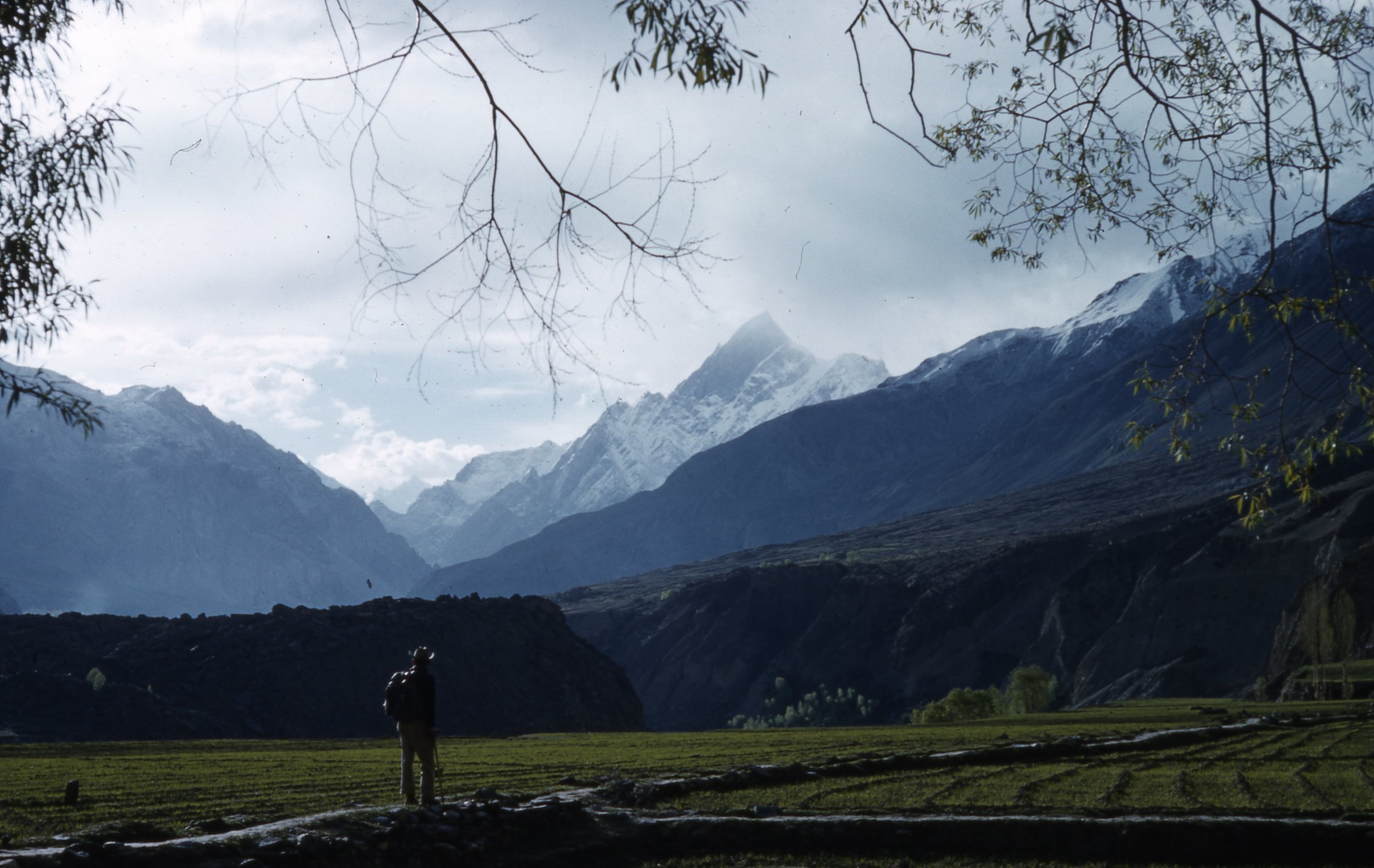
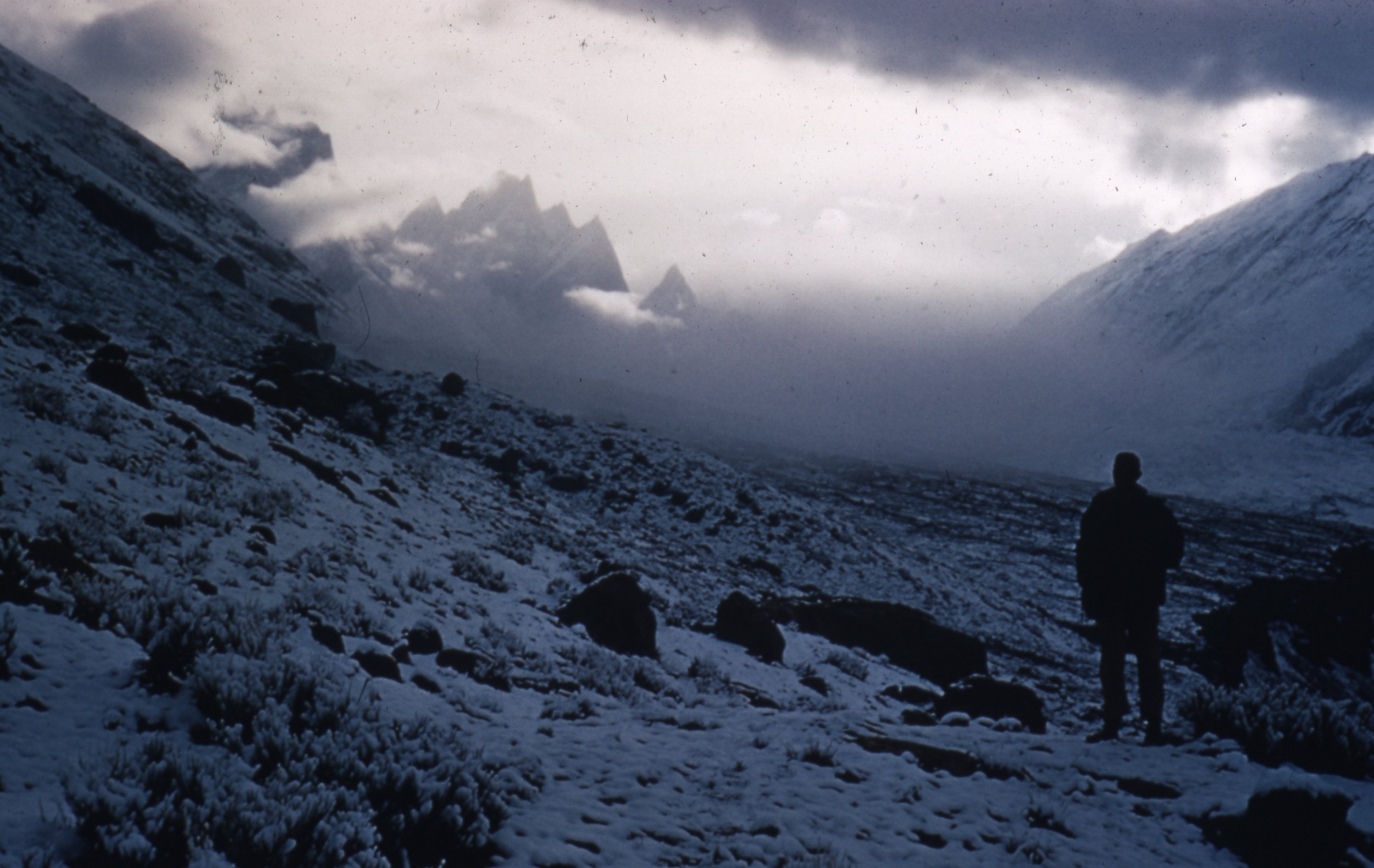
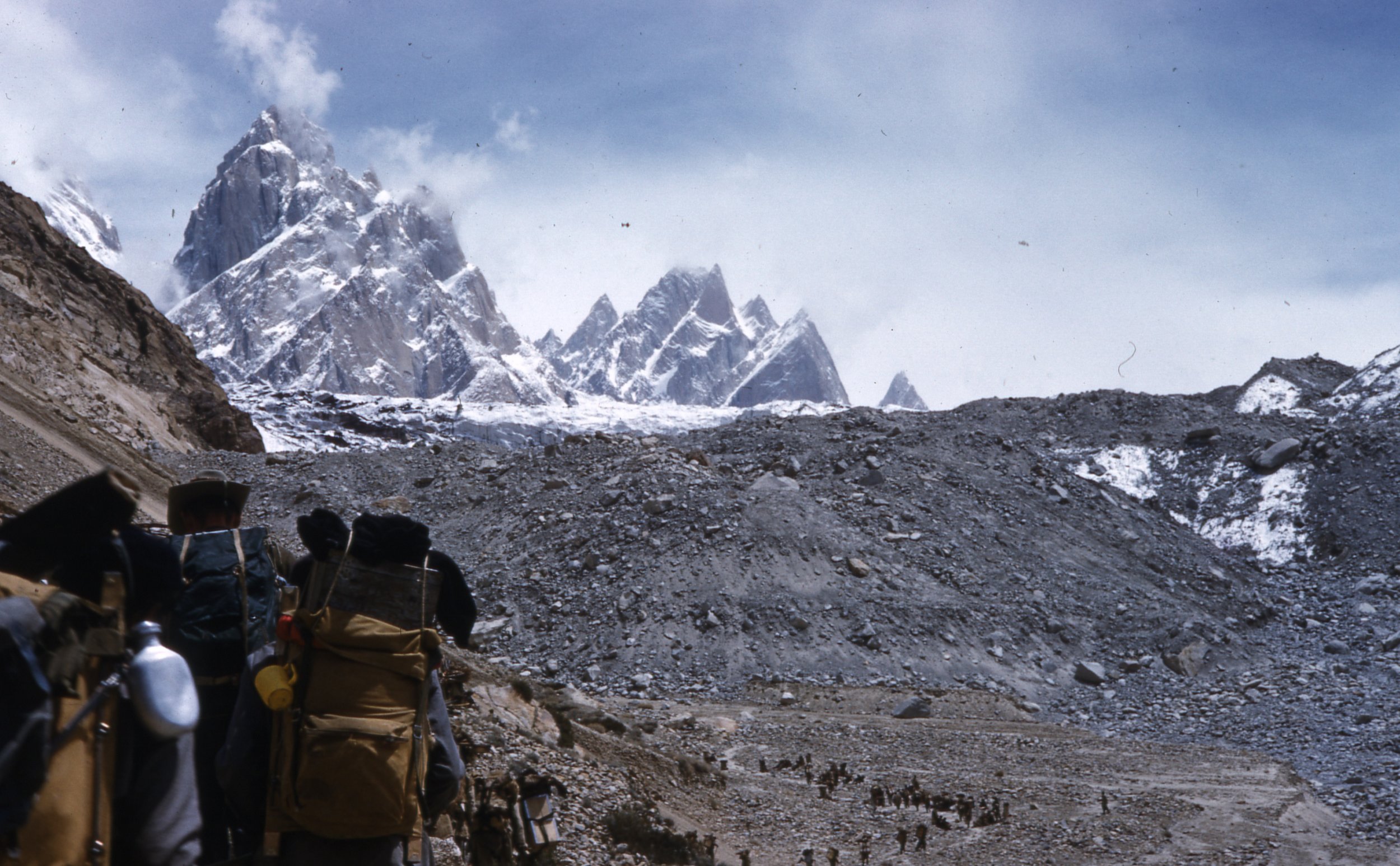
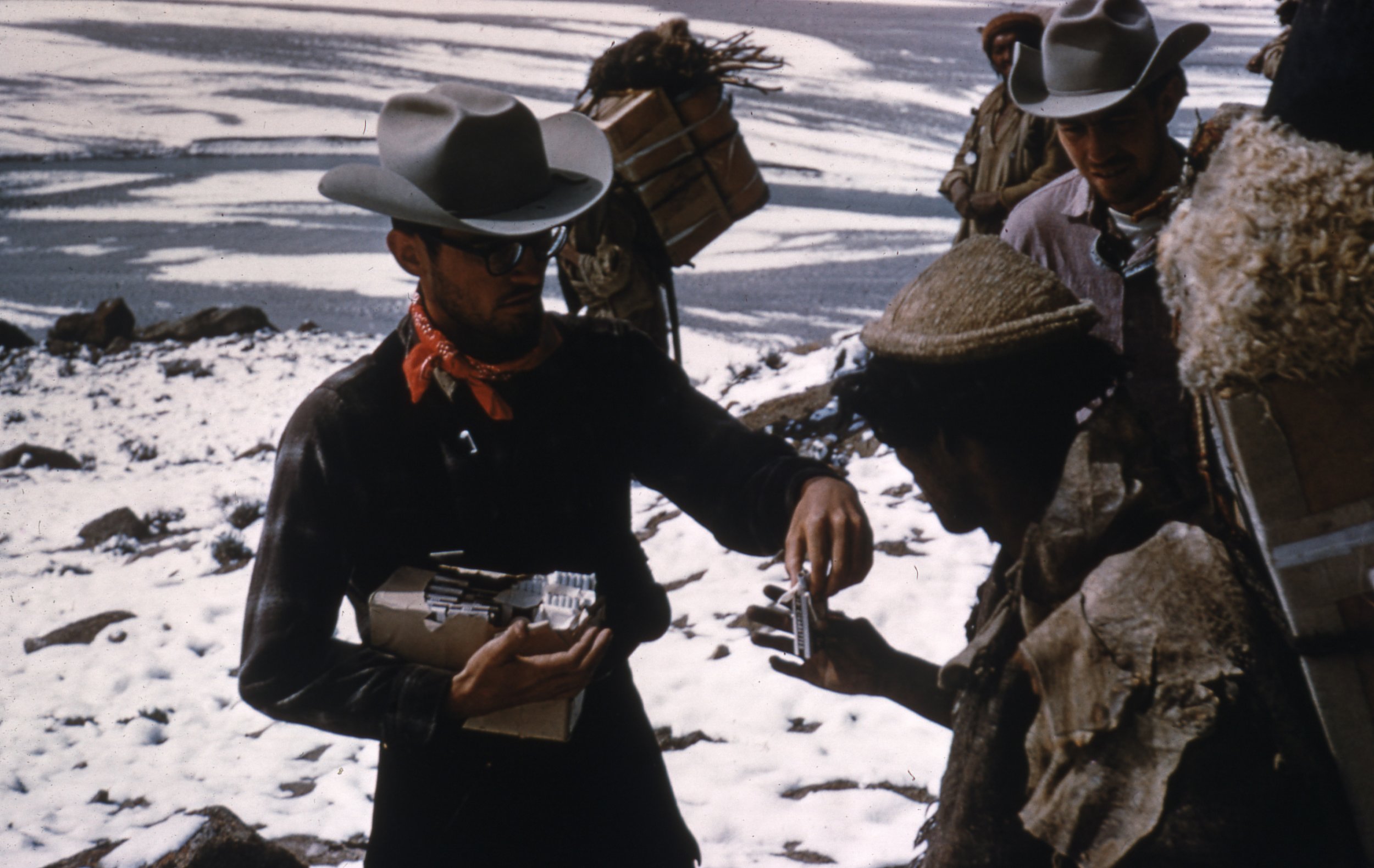
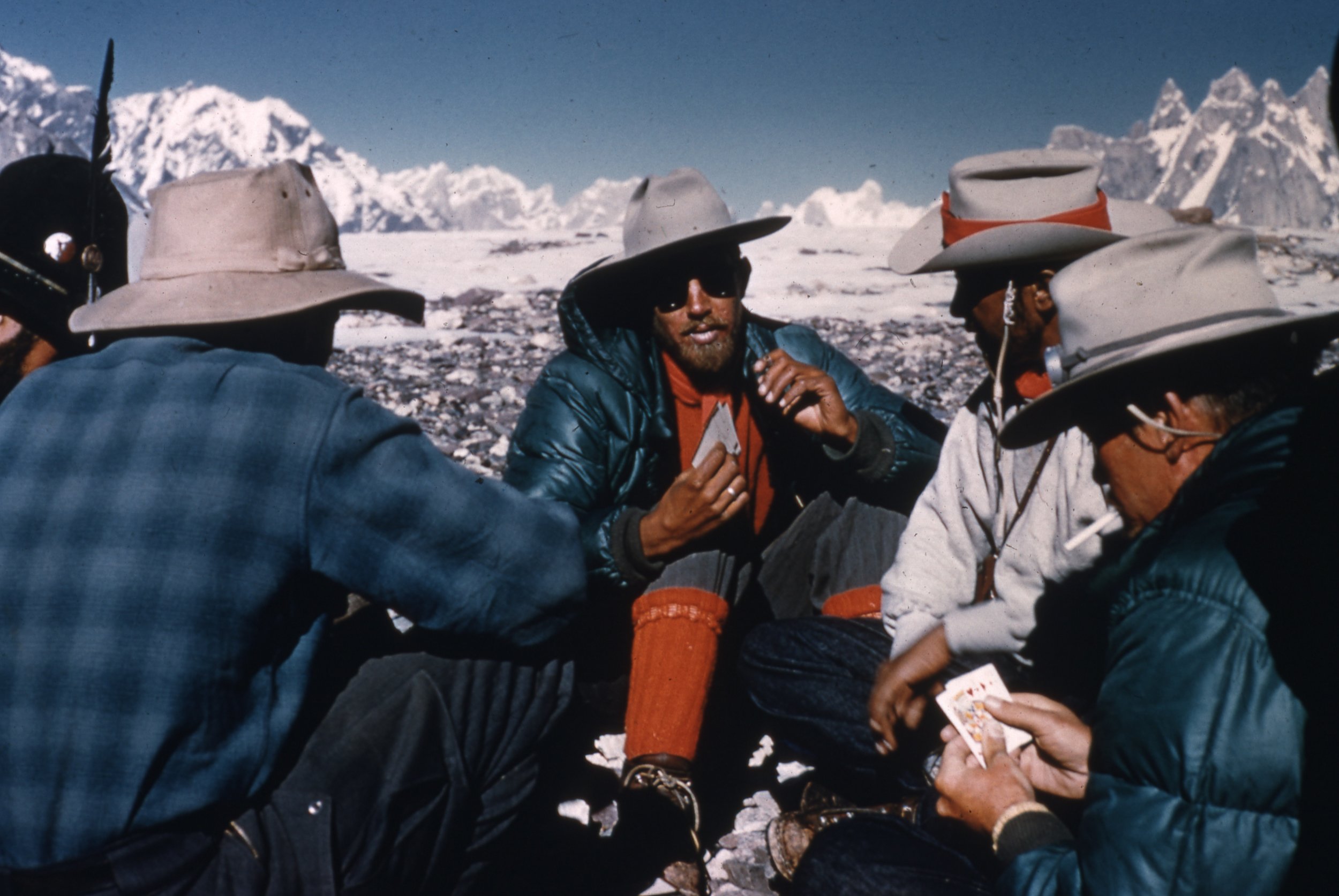
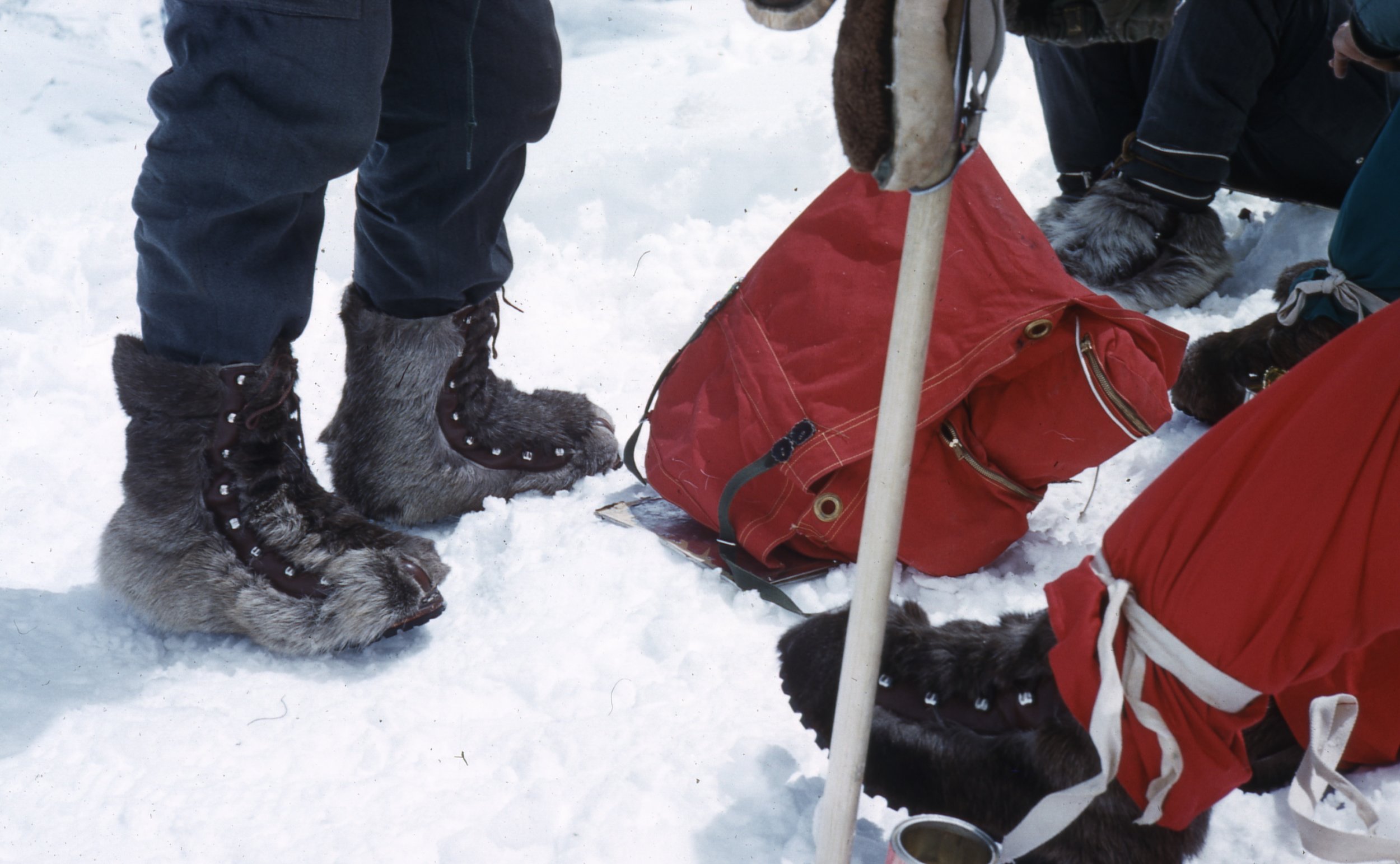
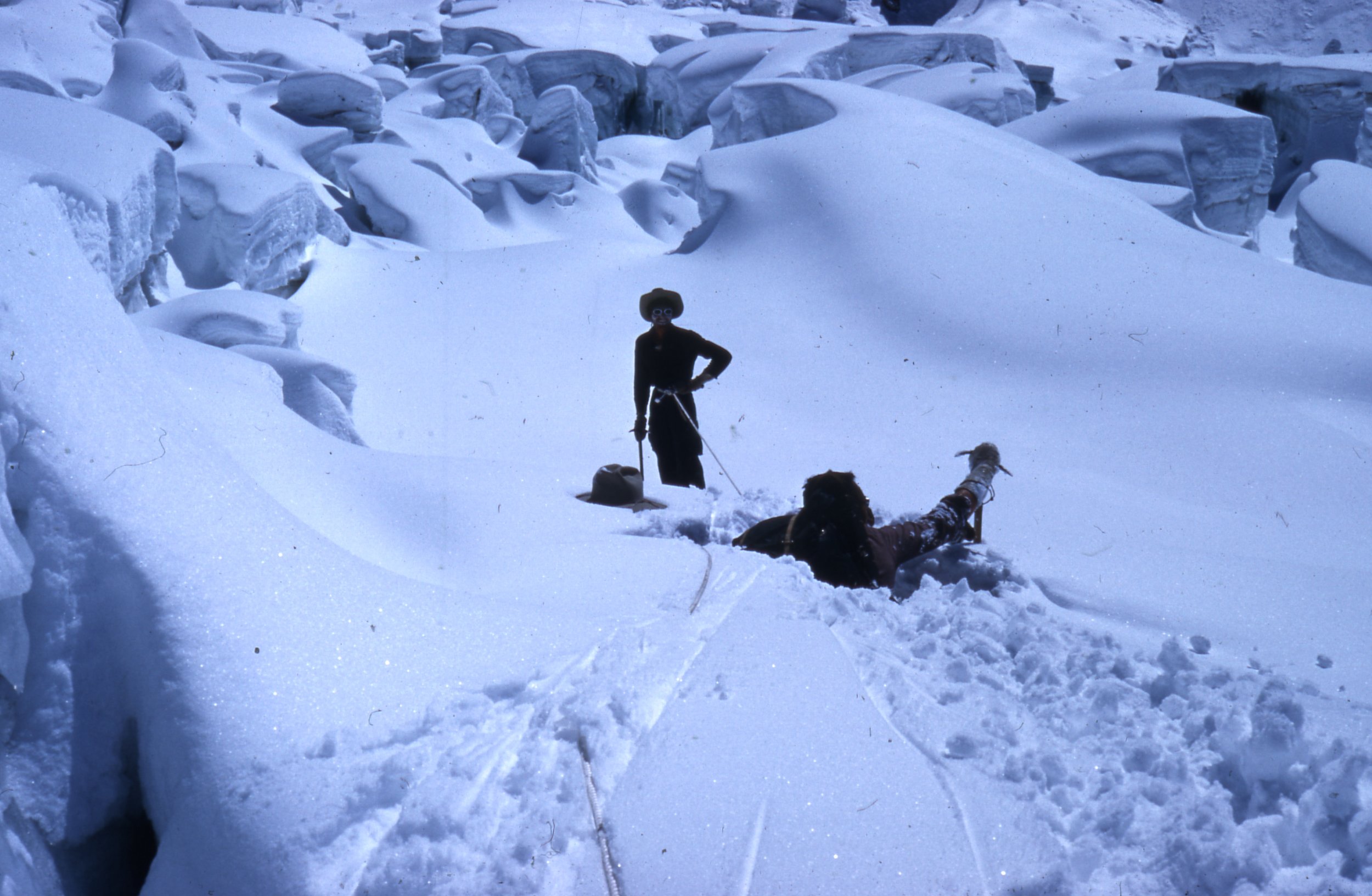
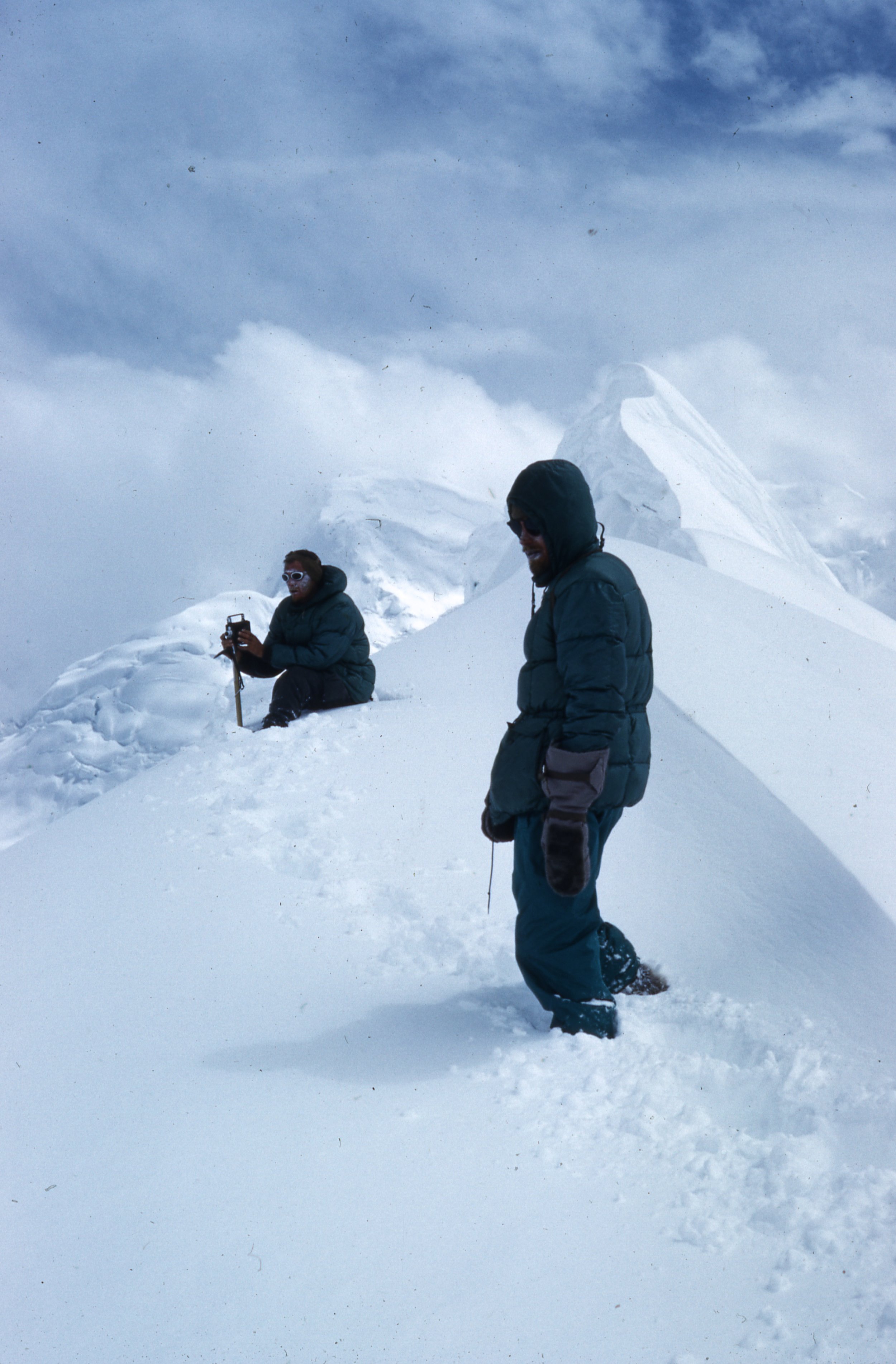
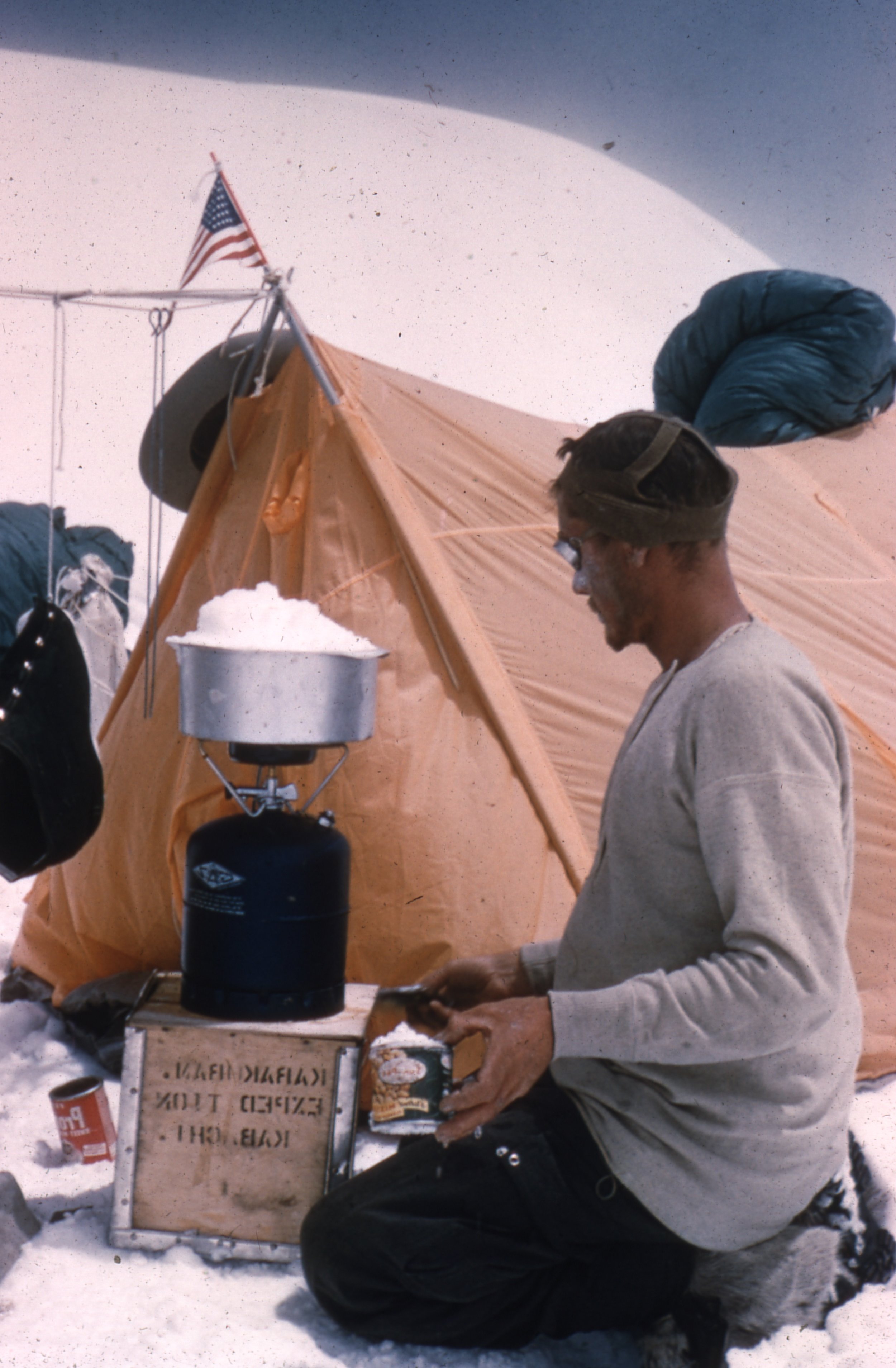

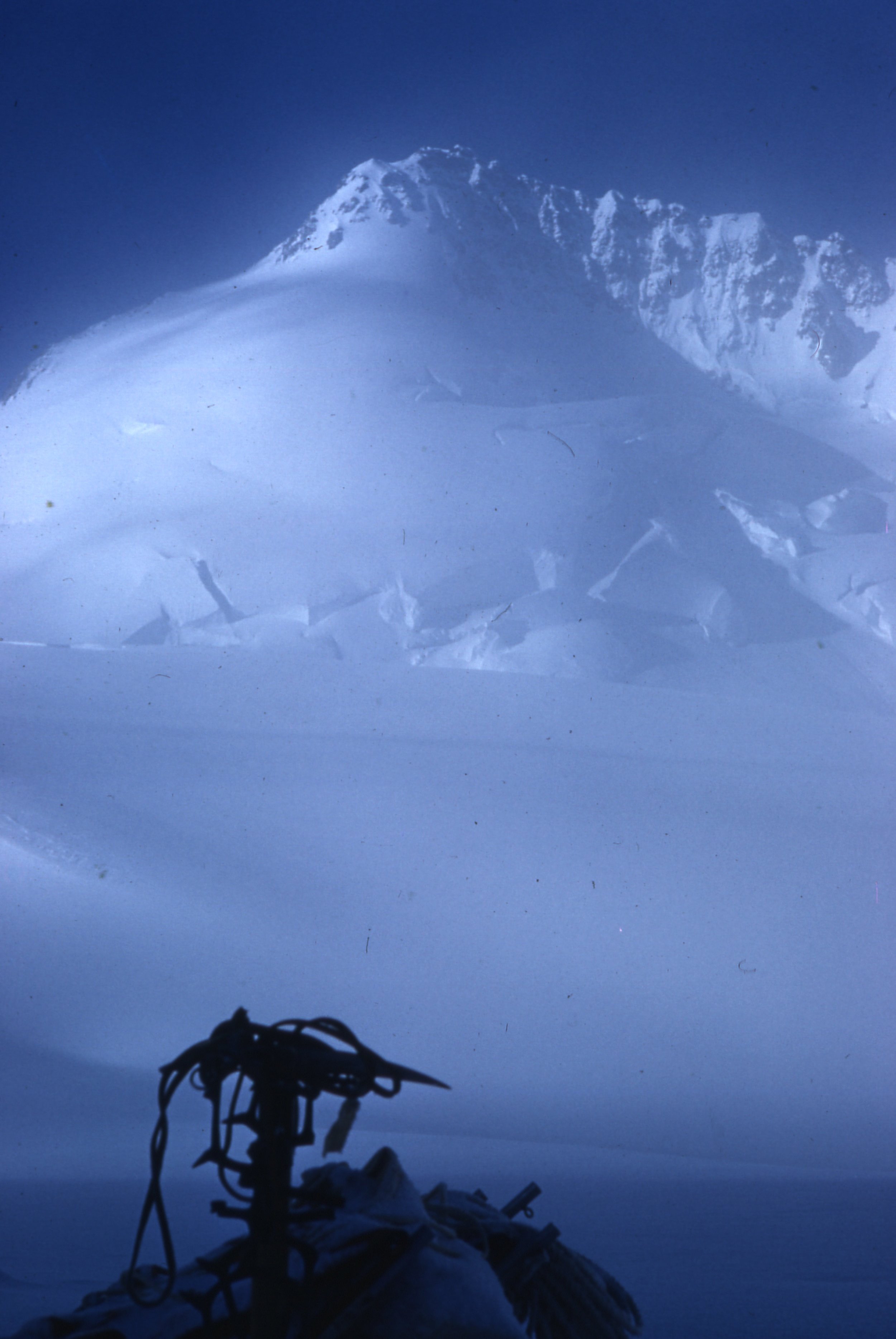
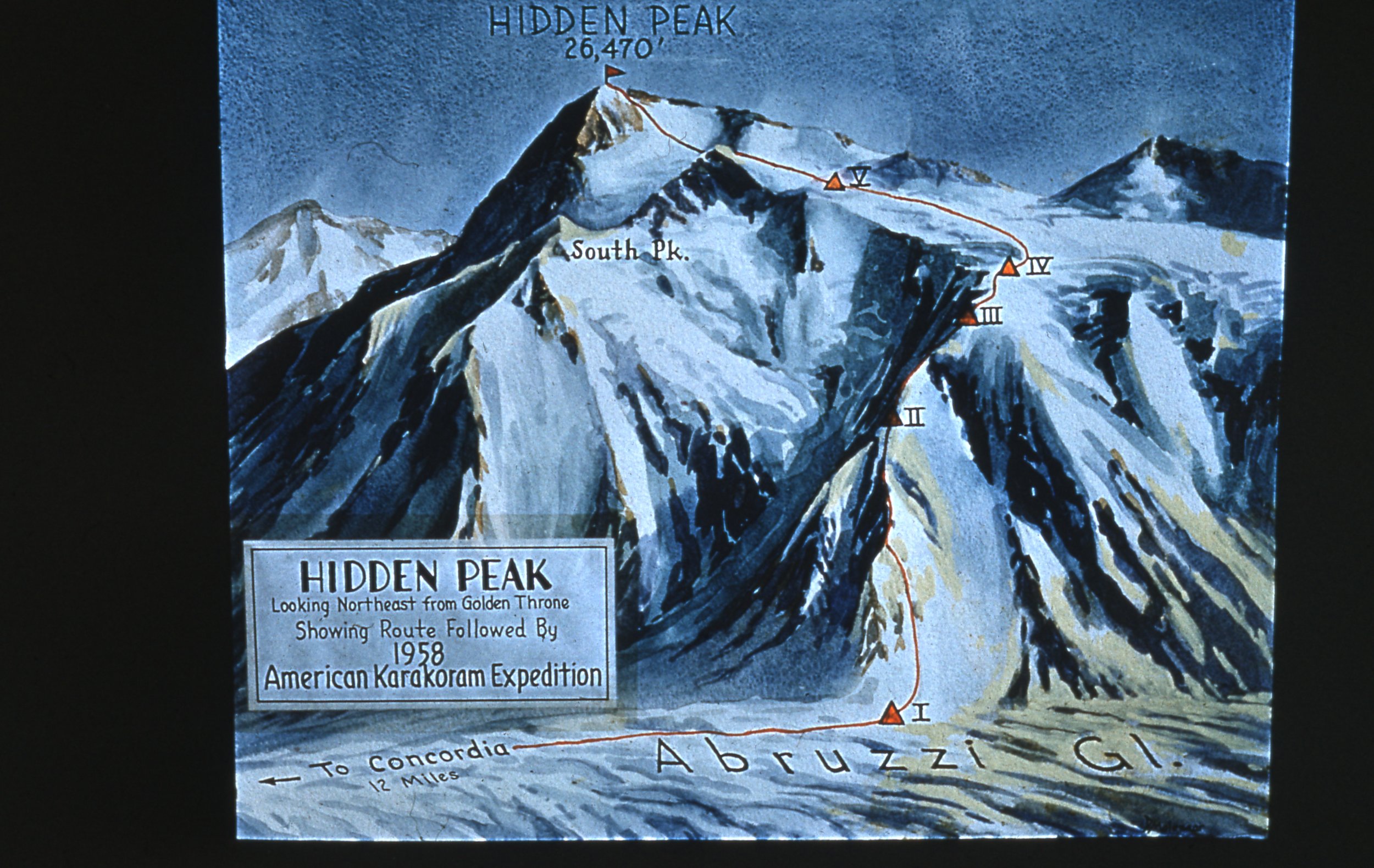
By Eric Rueth


